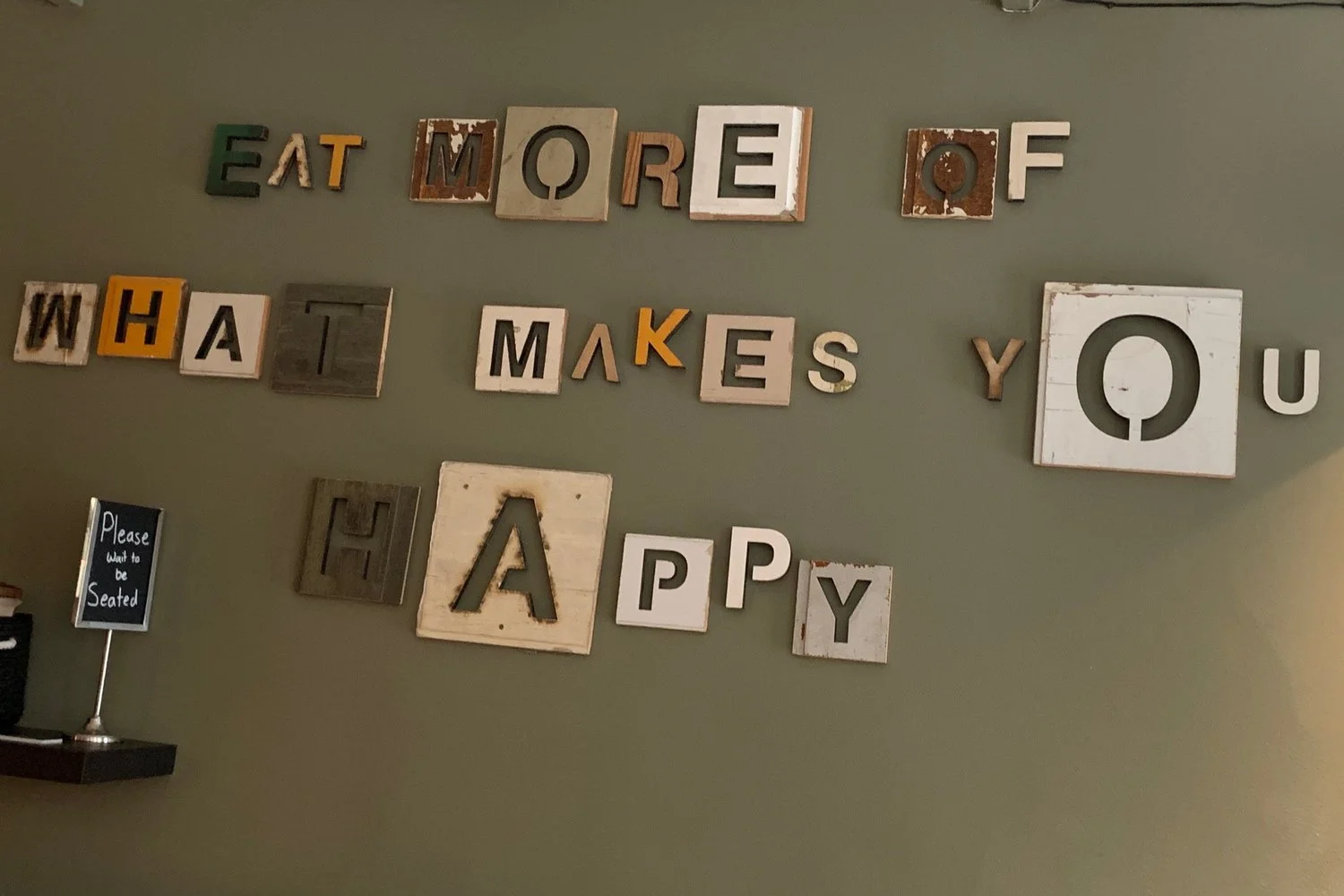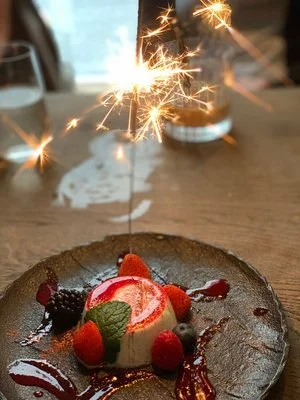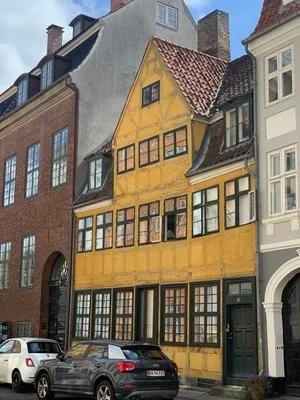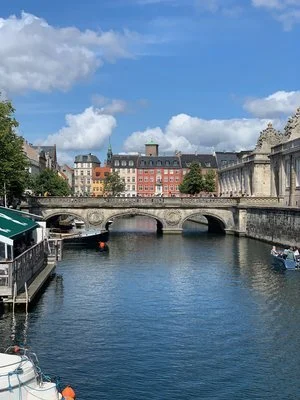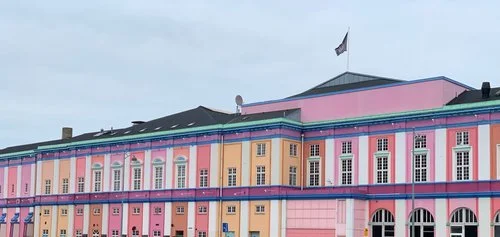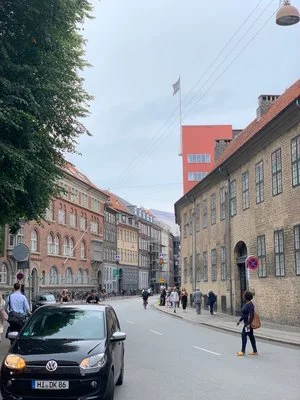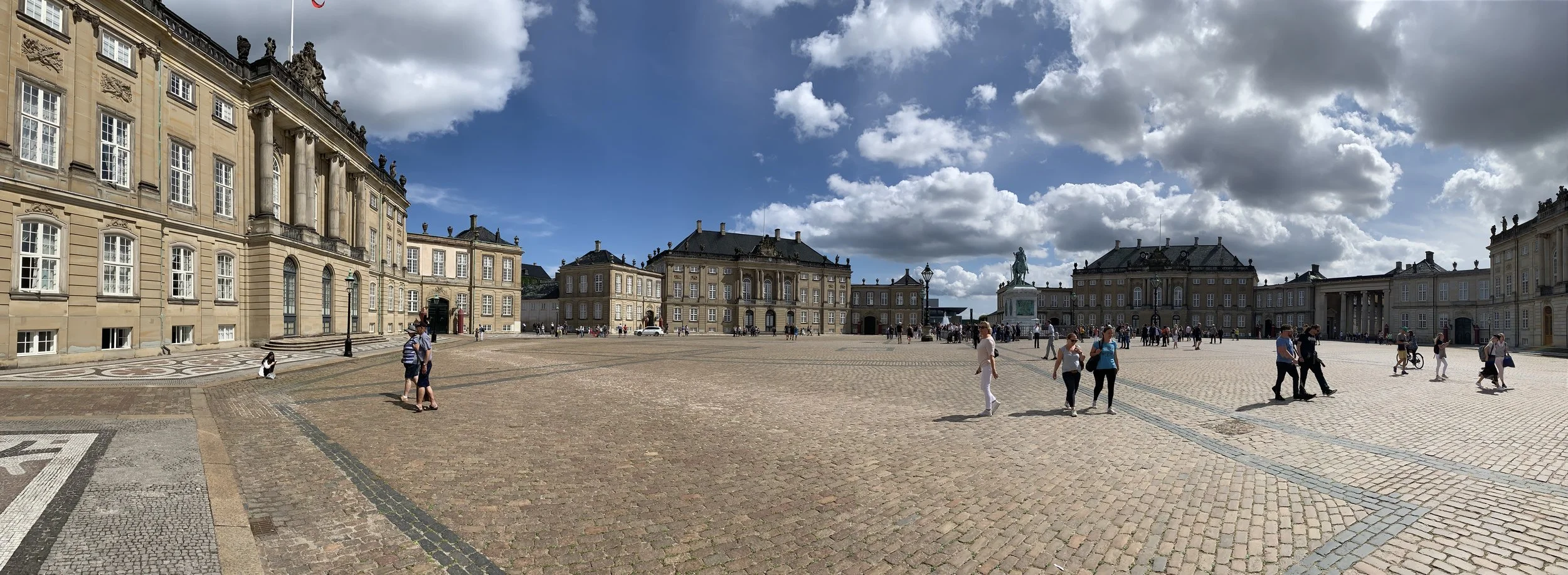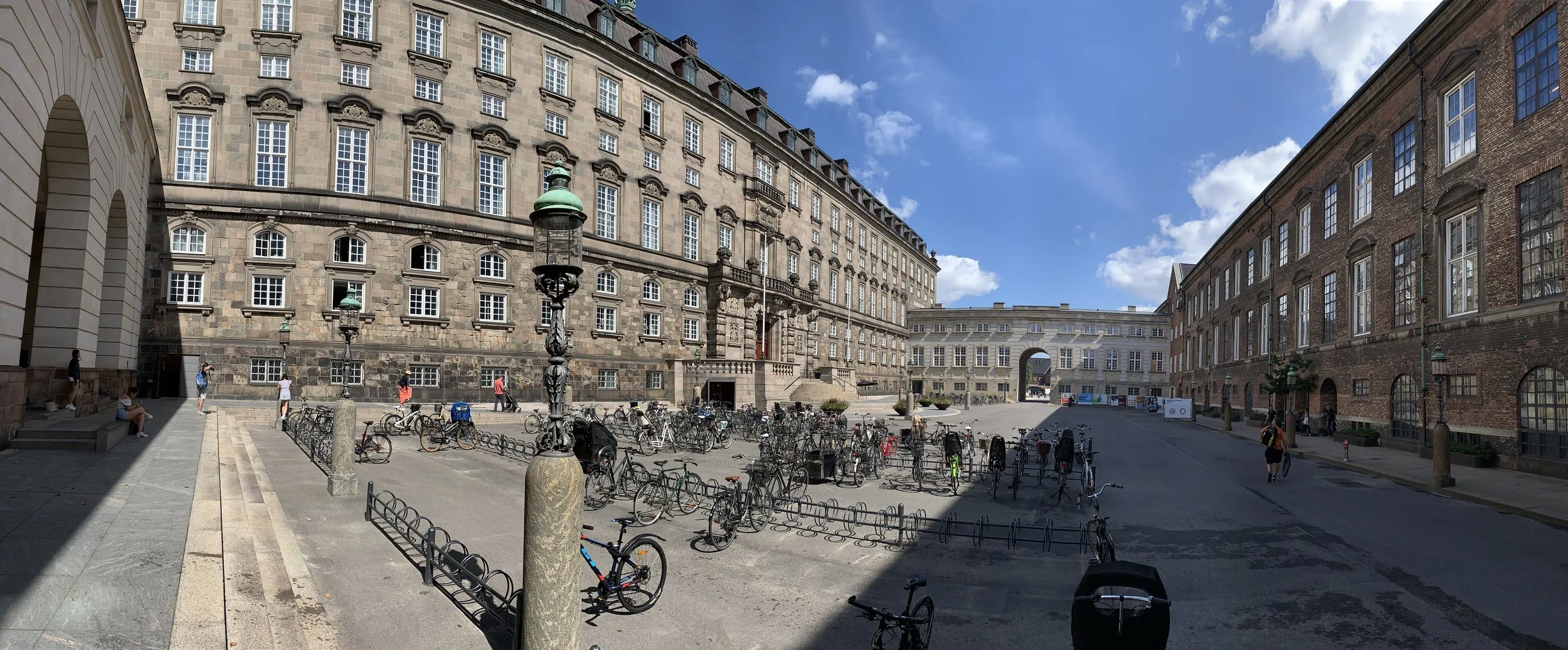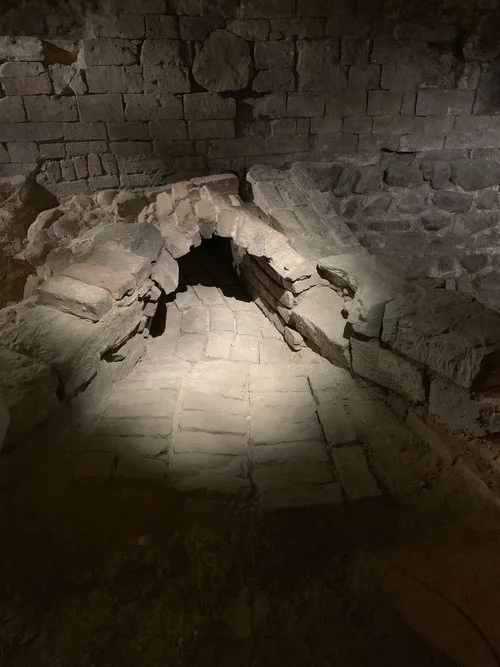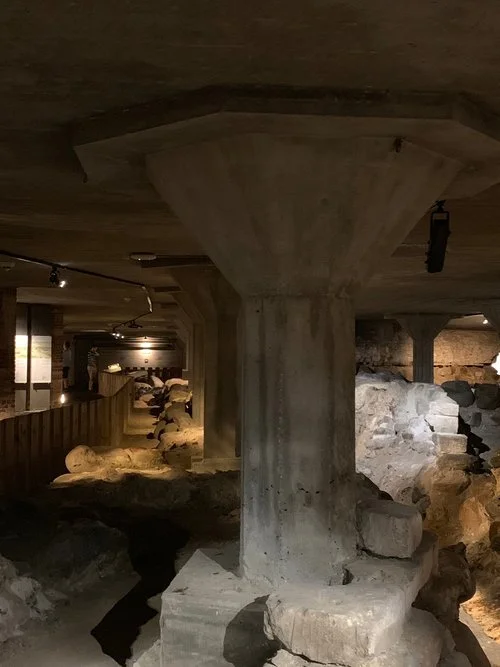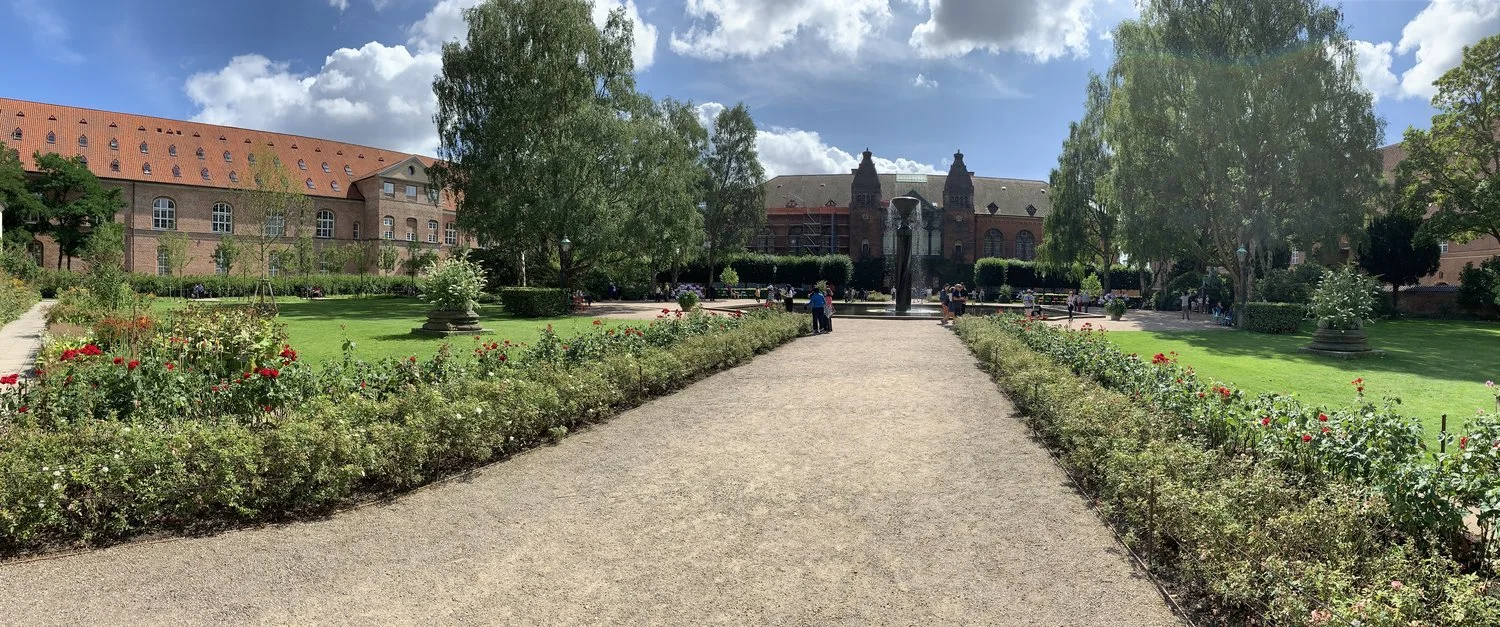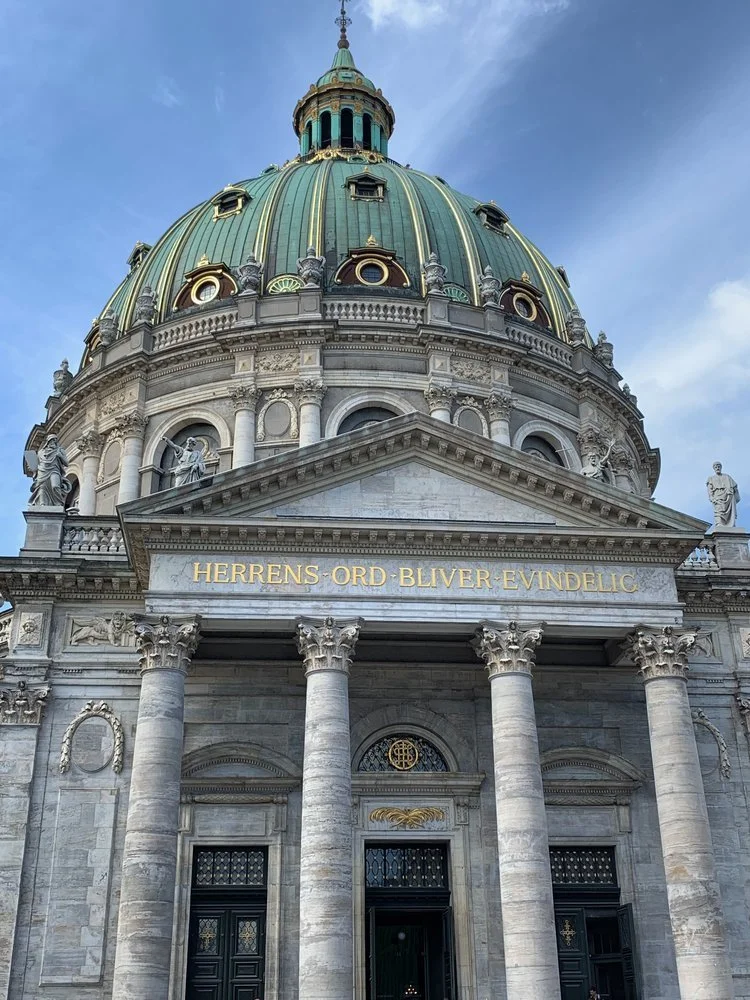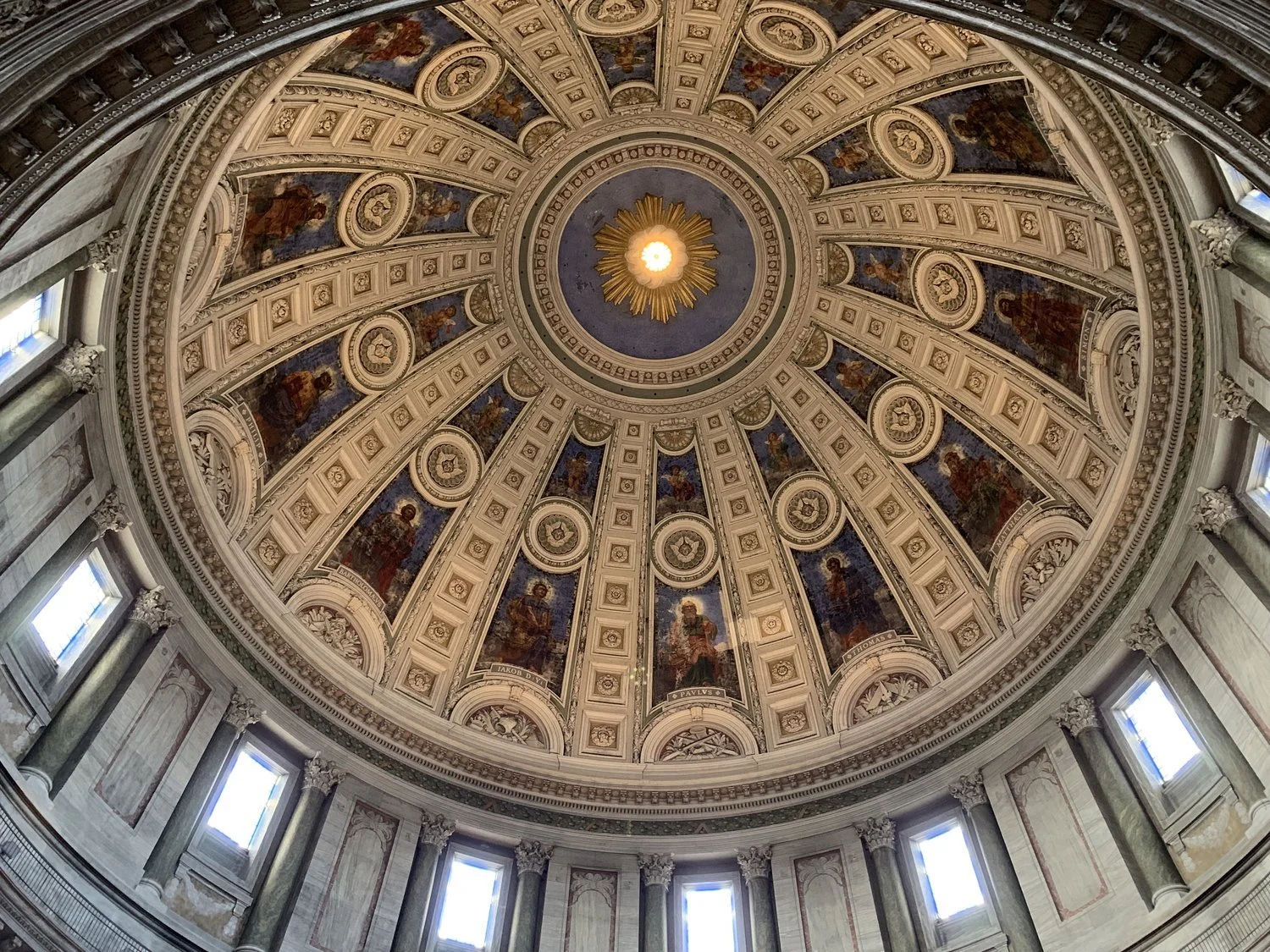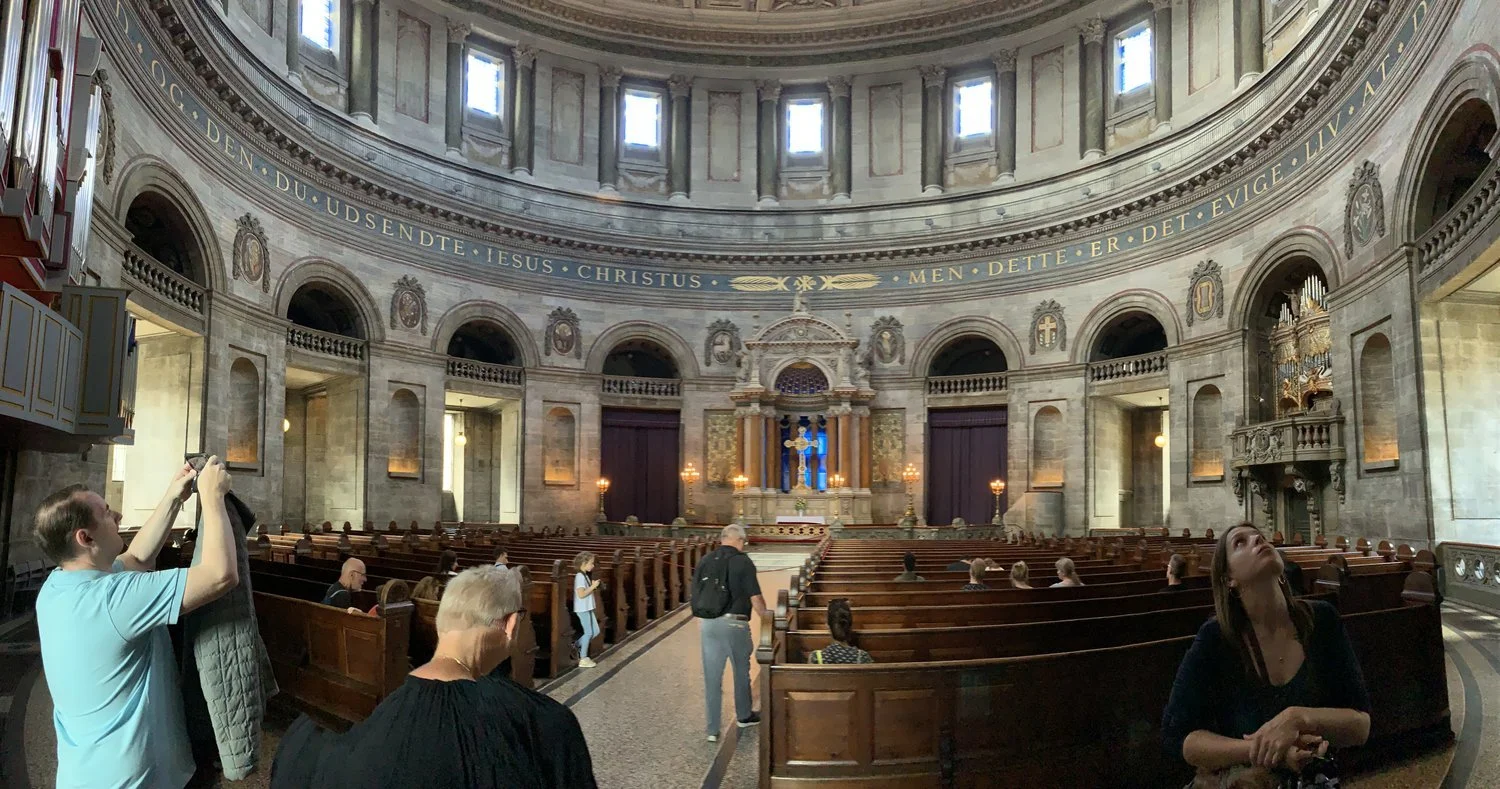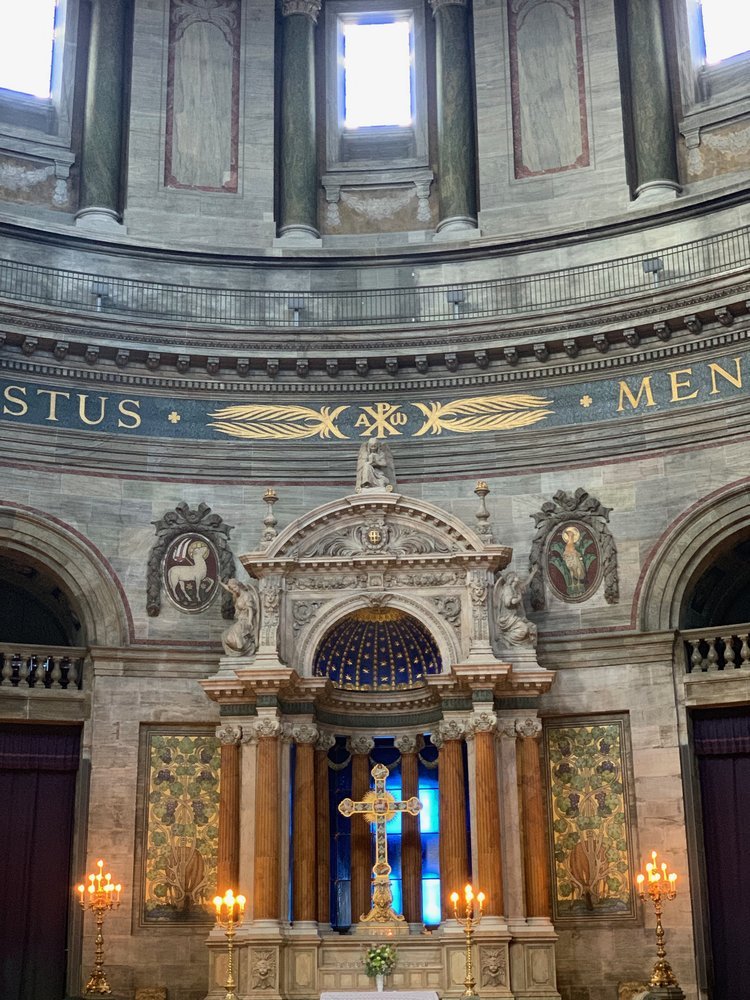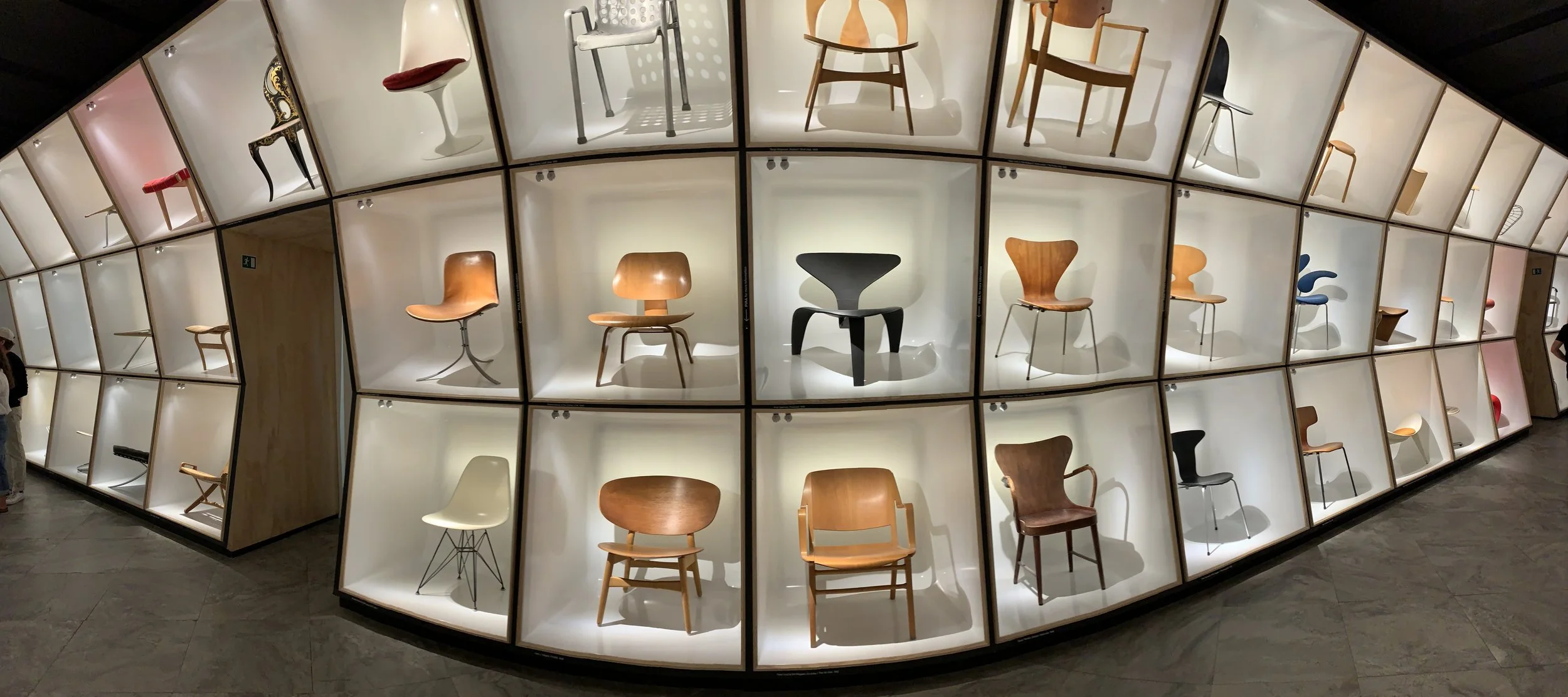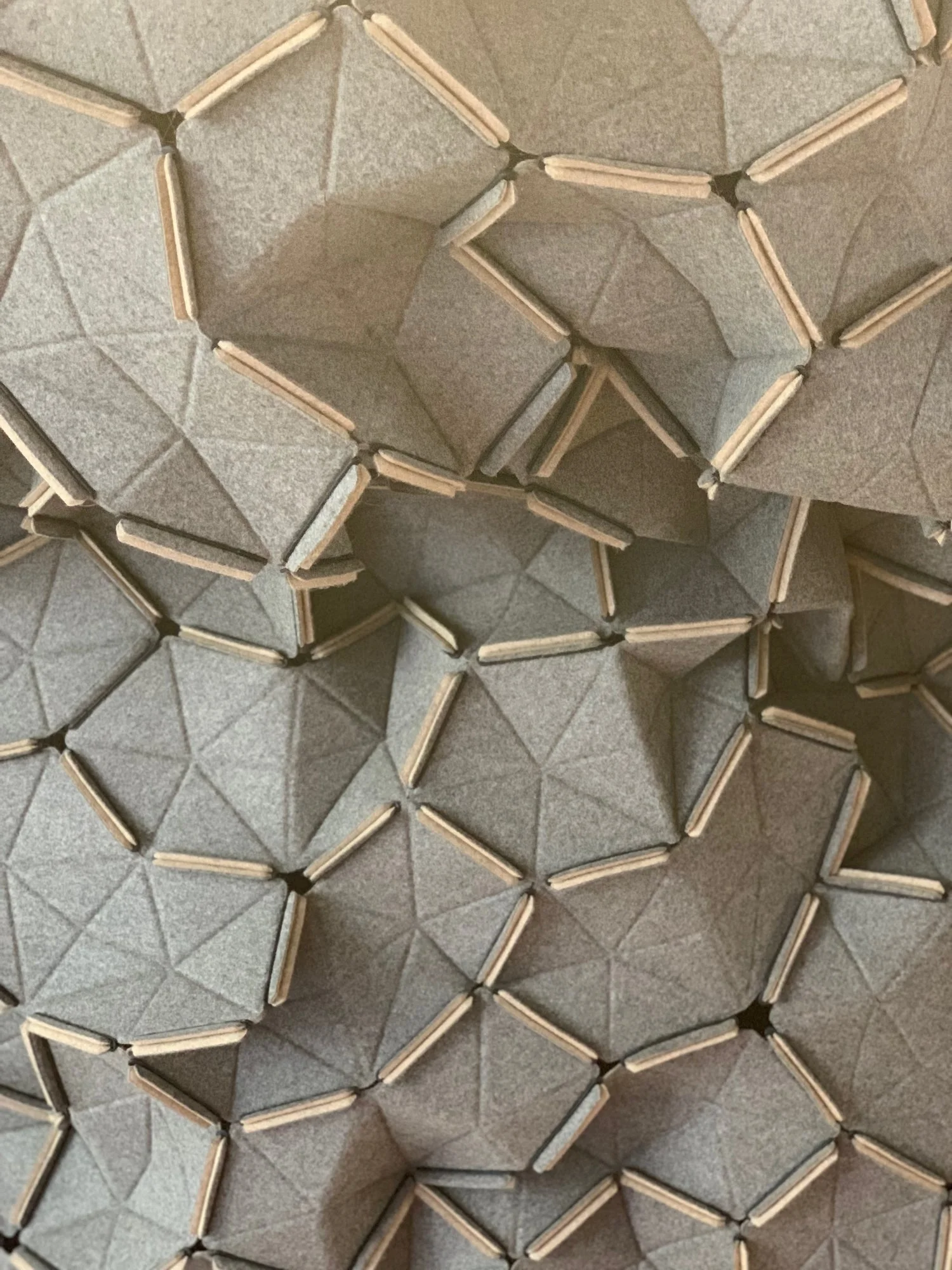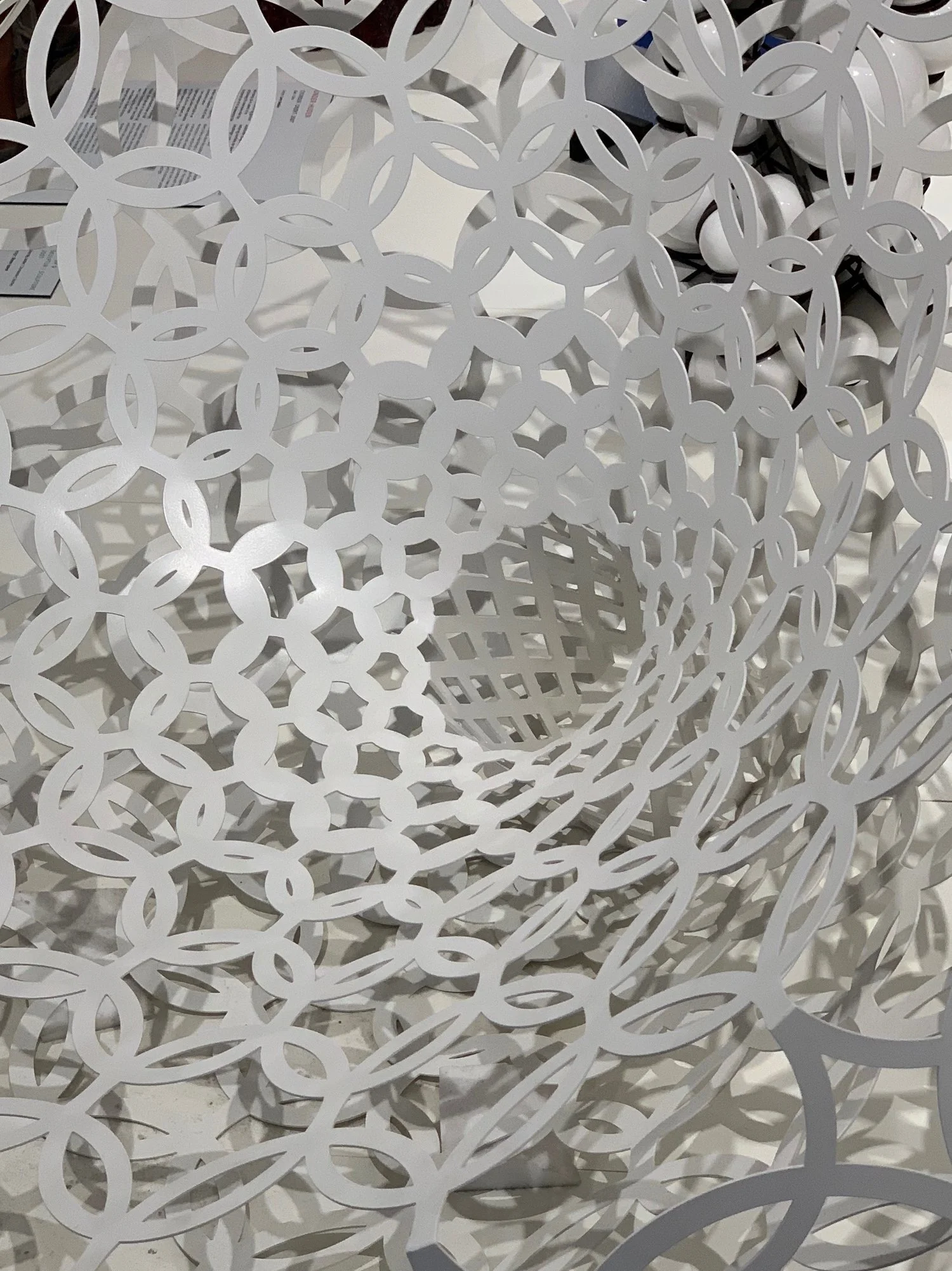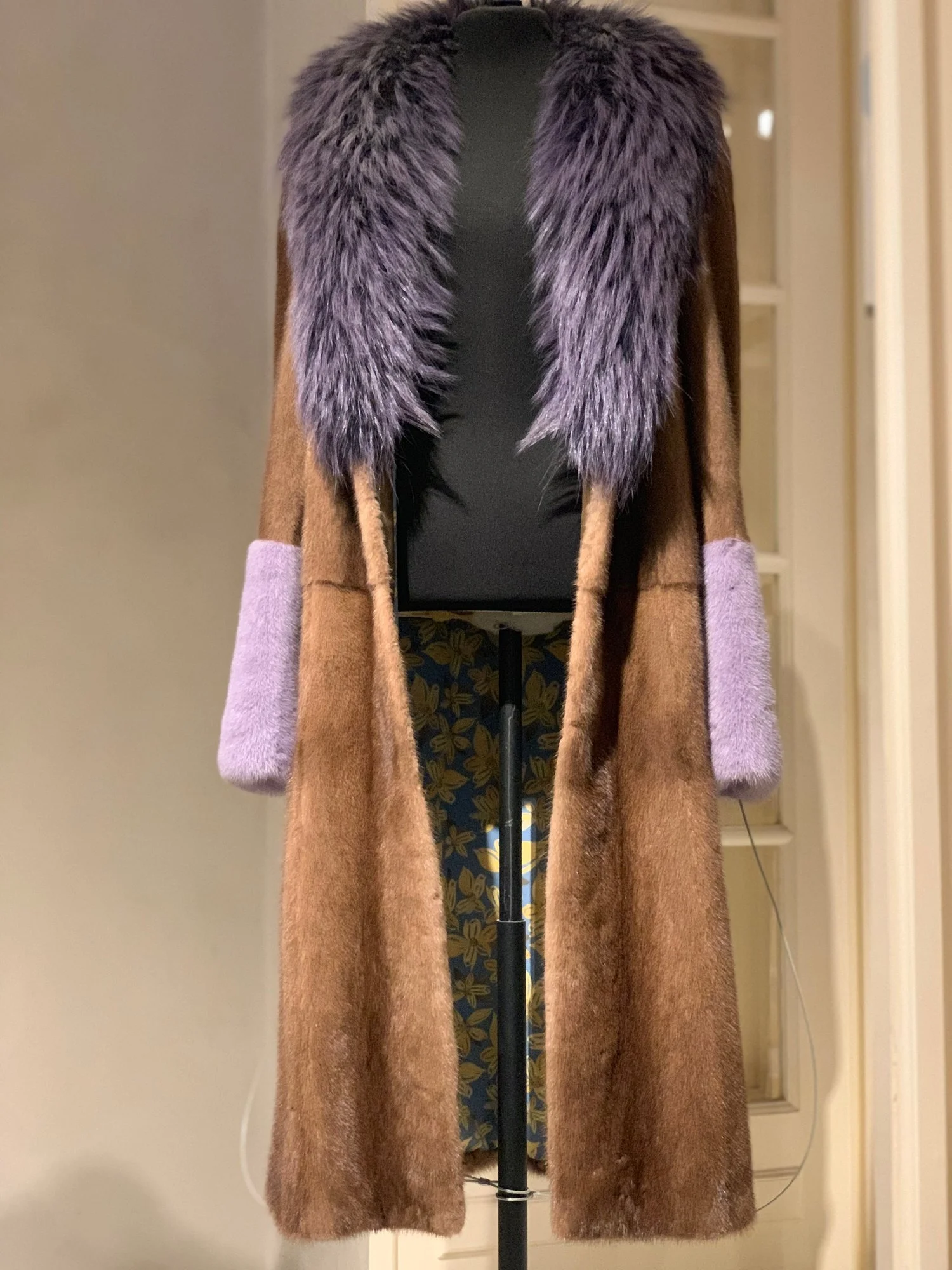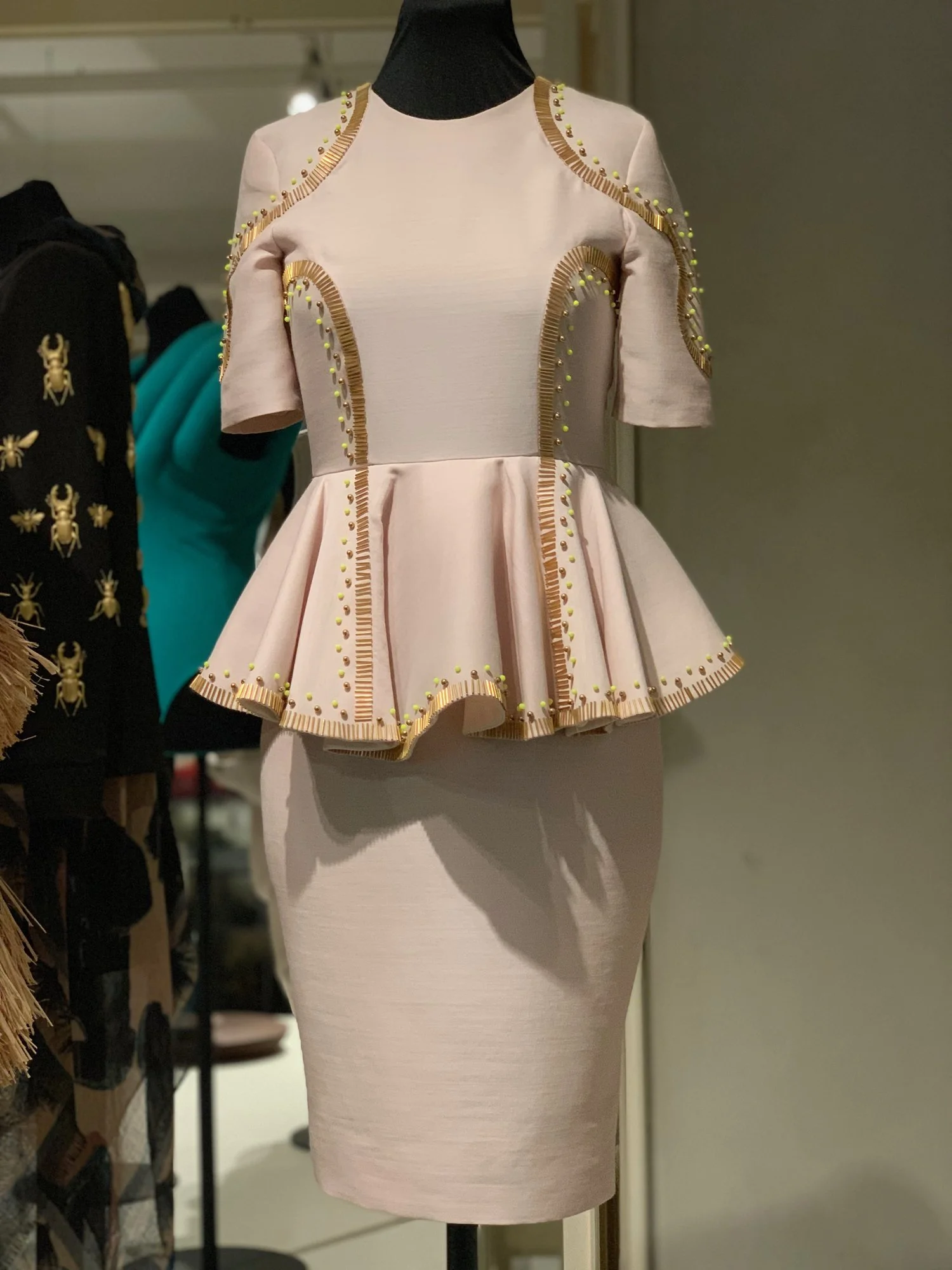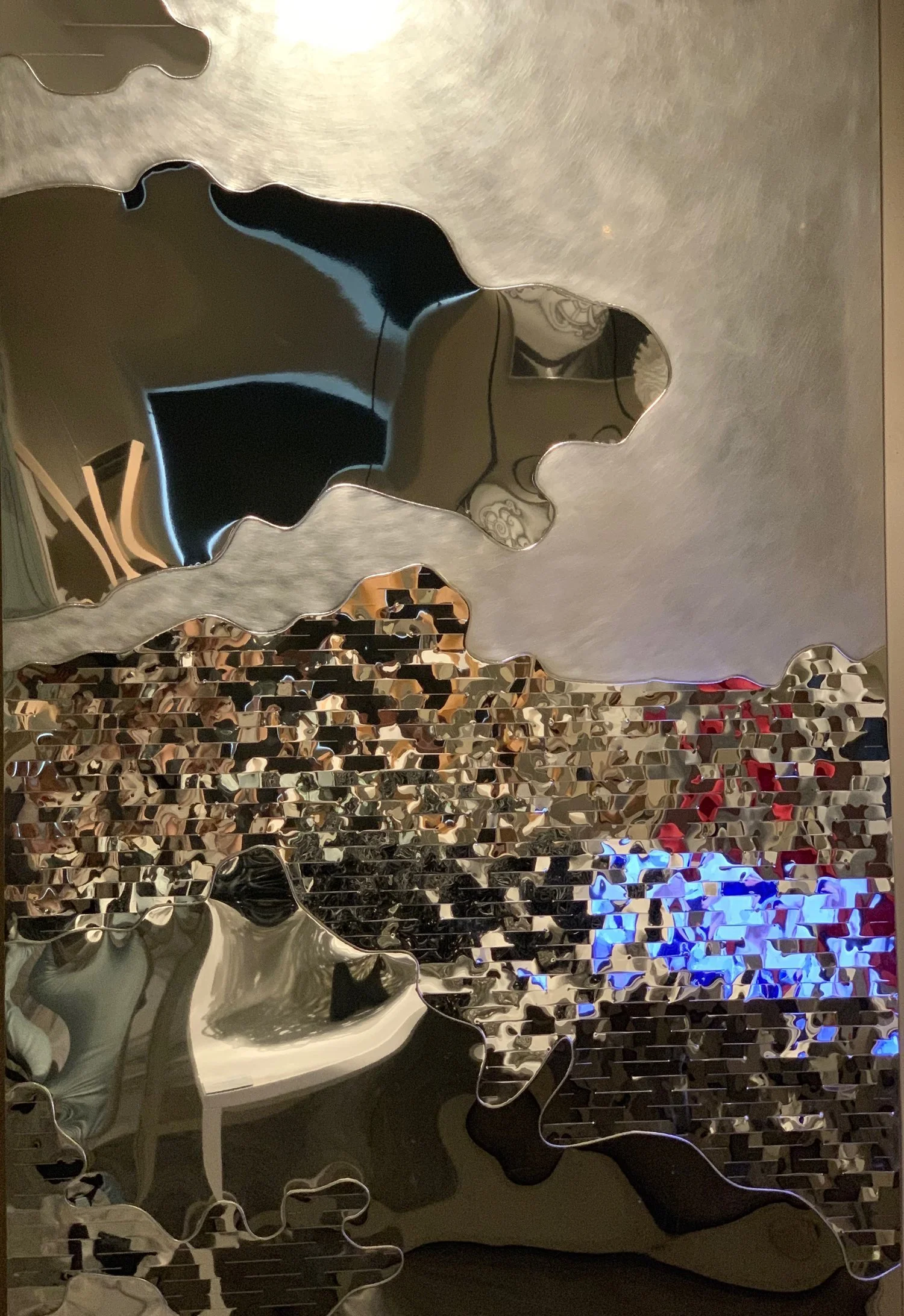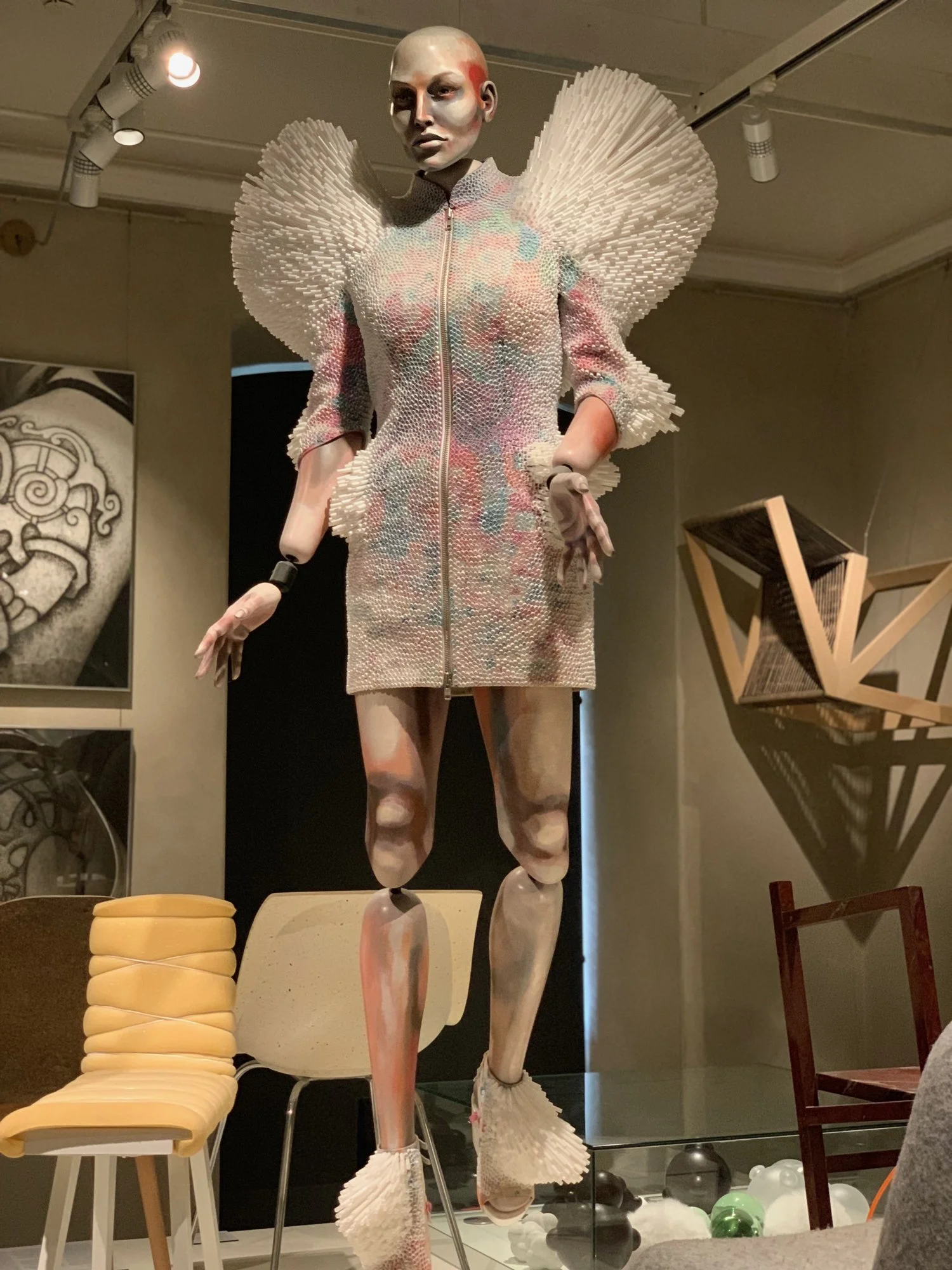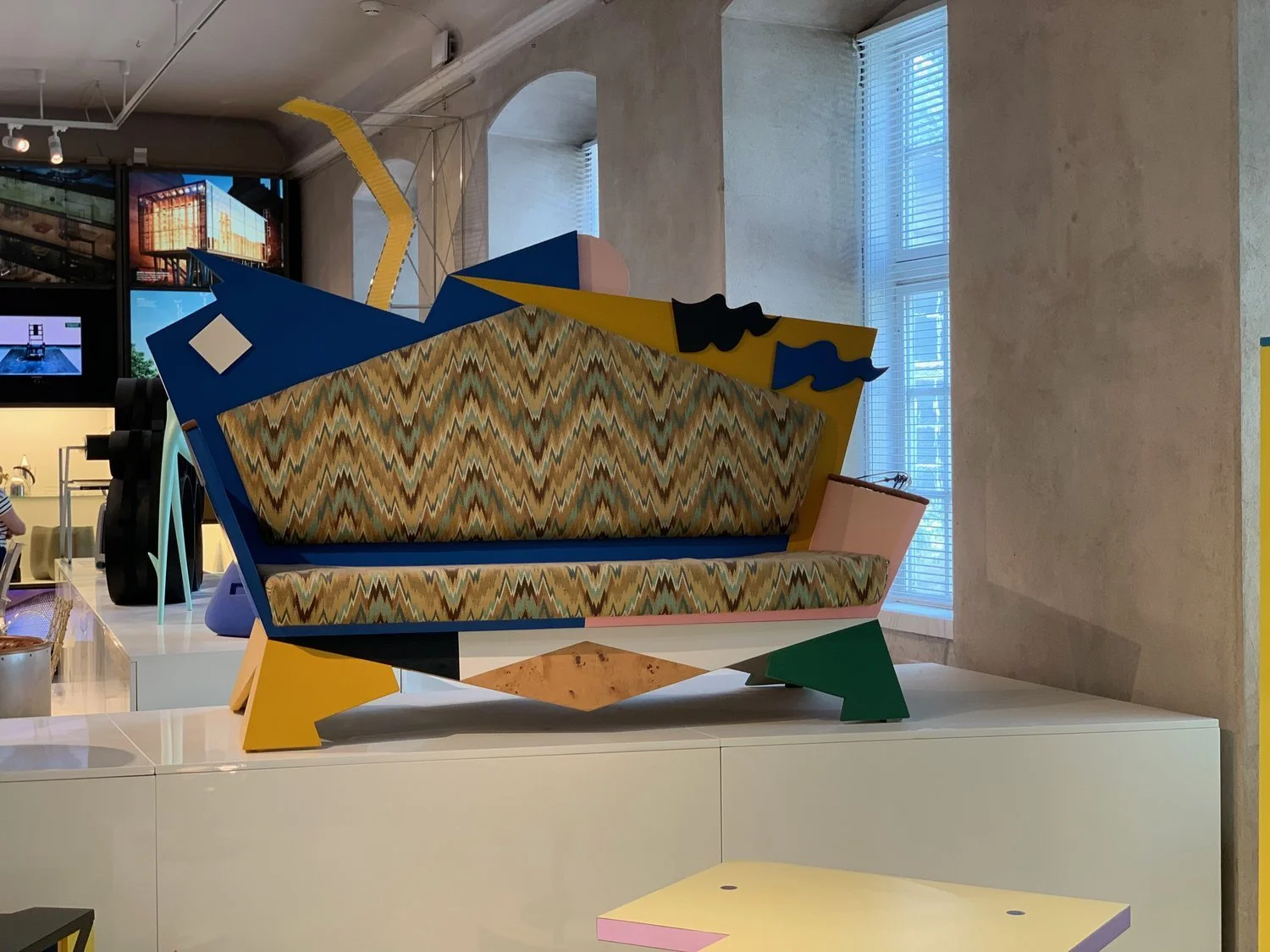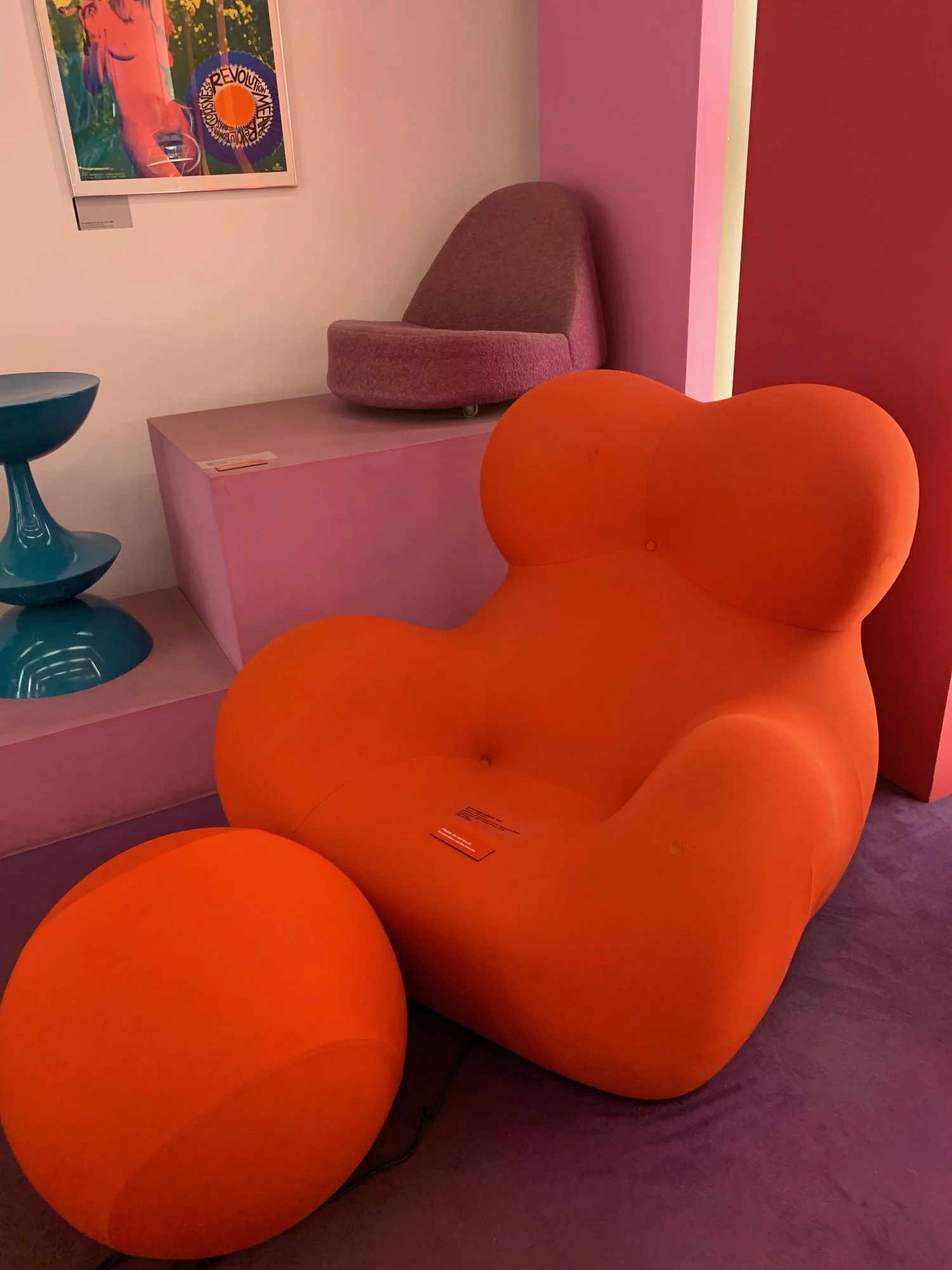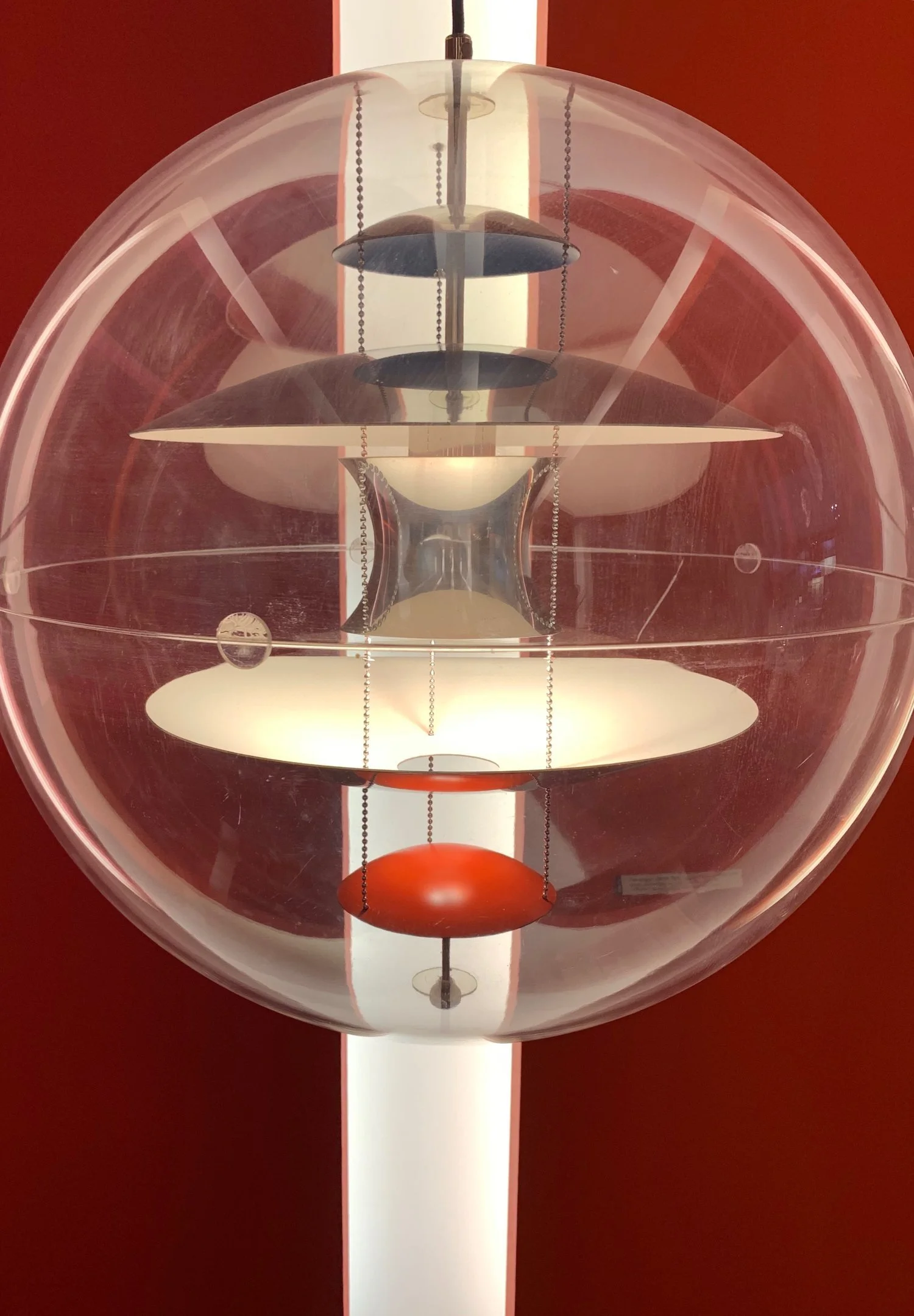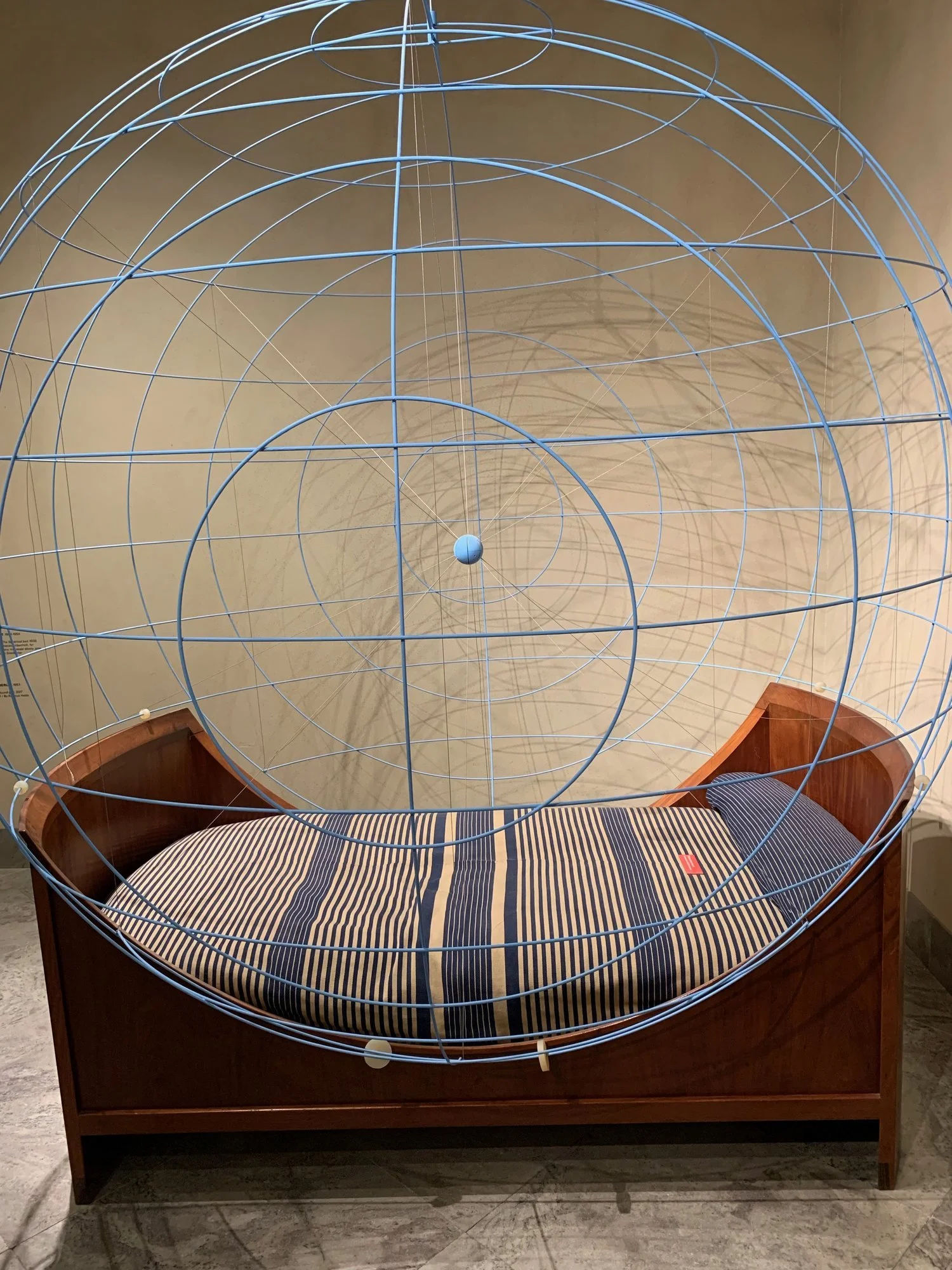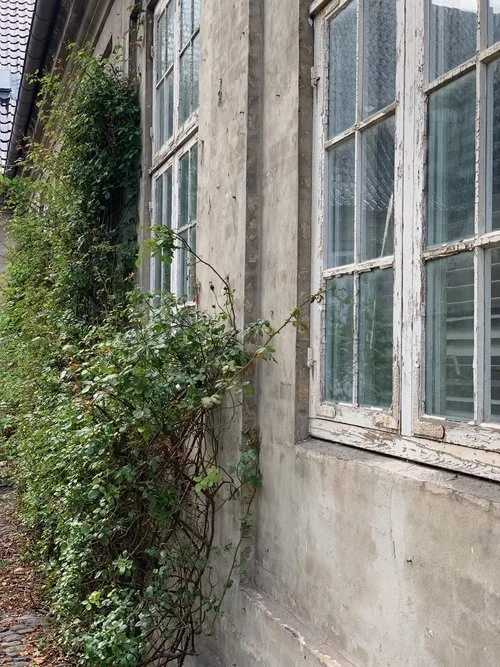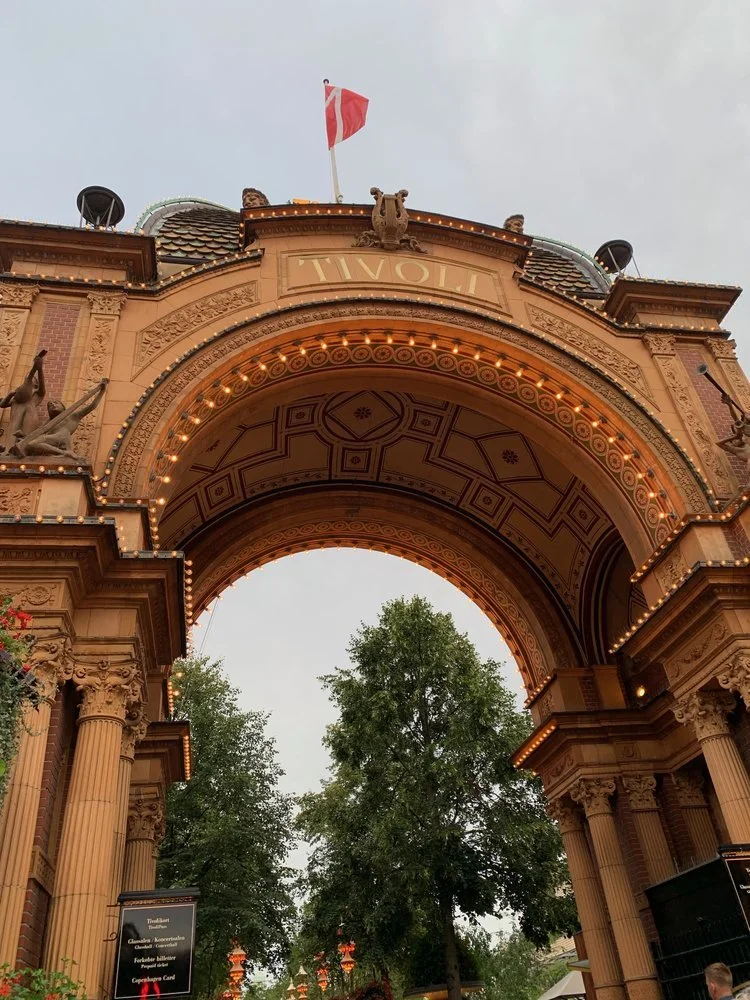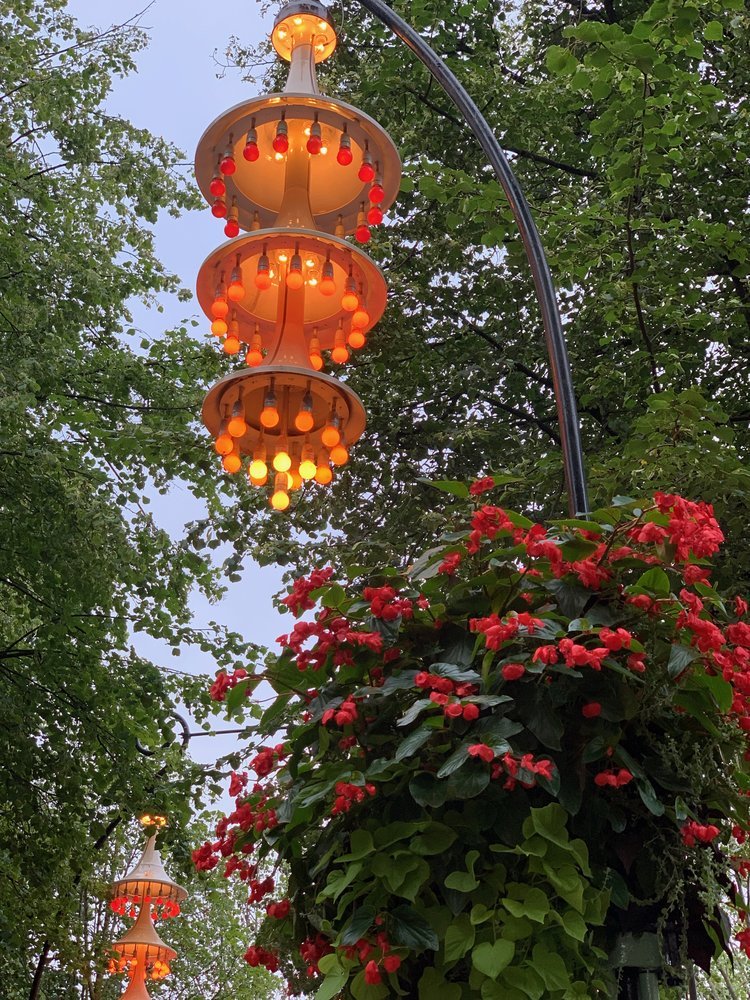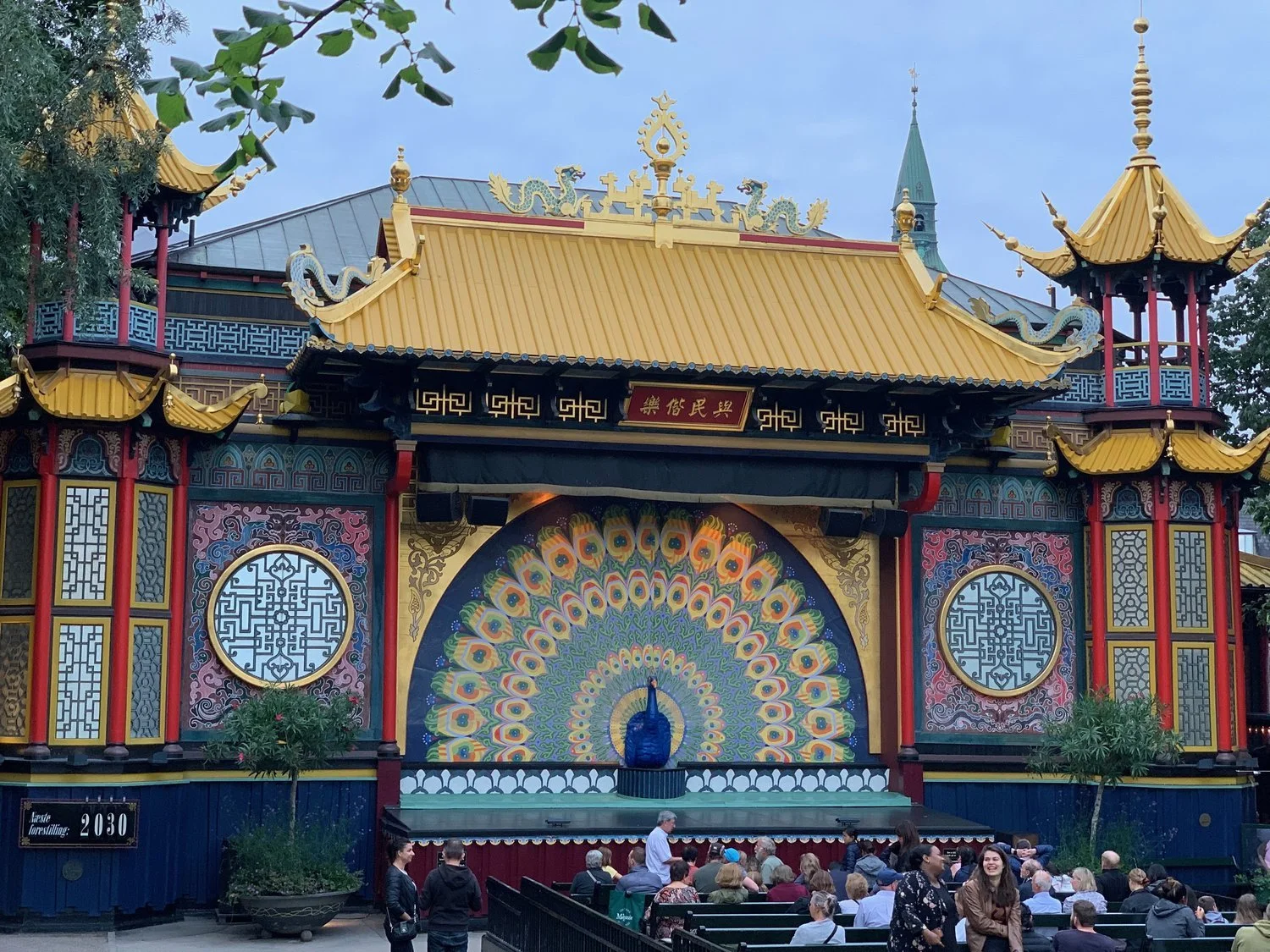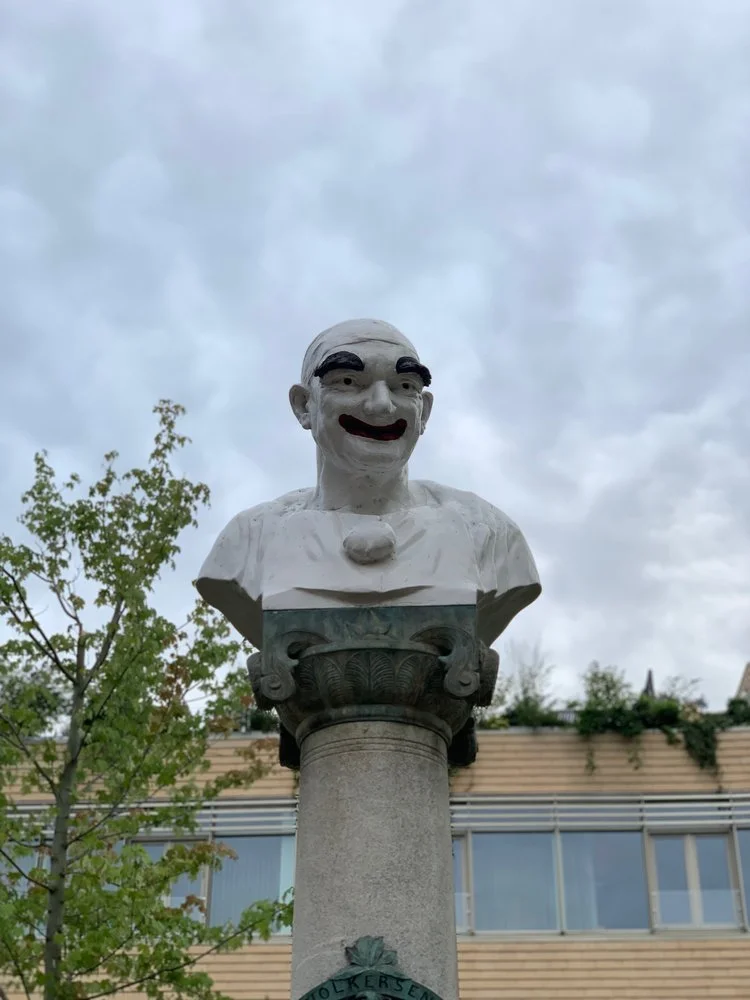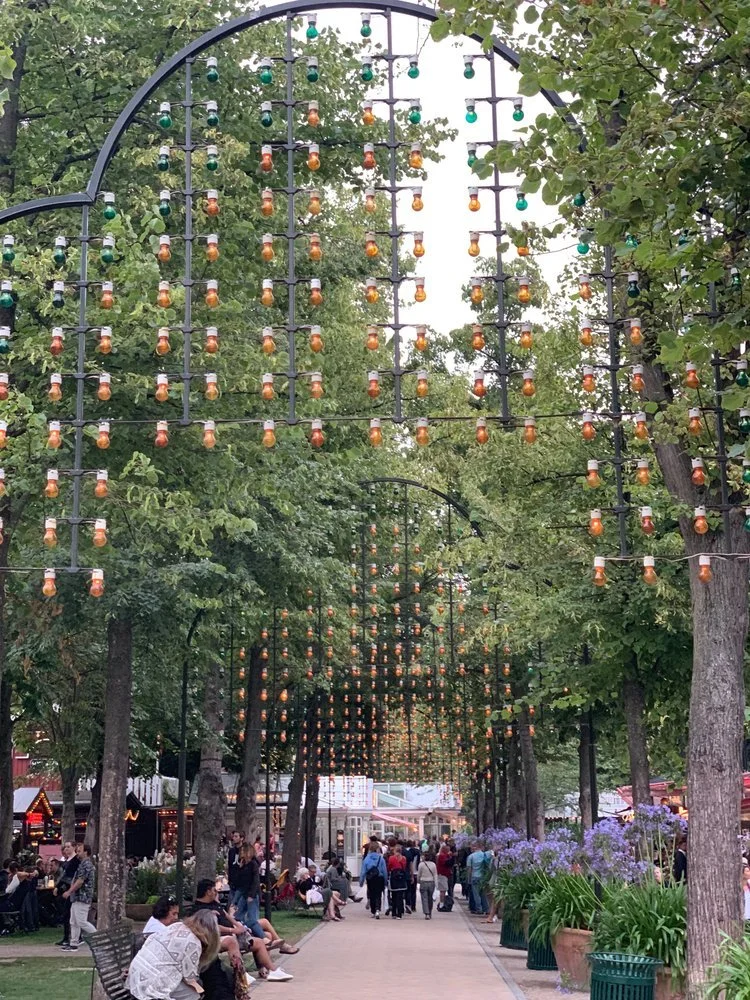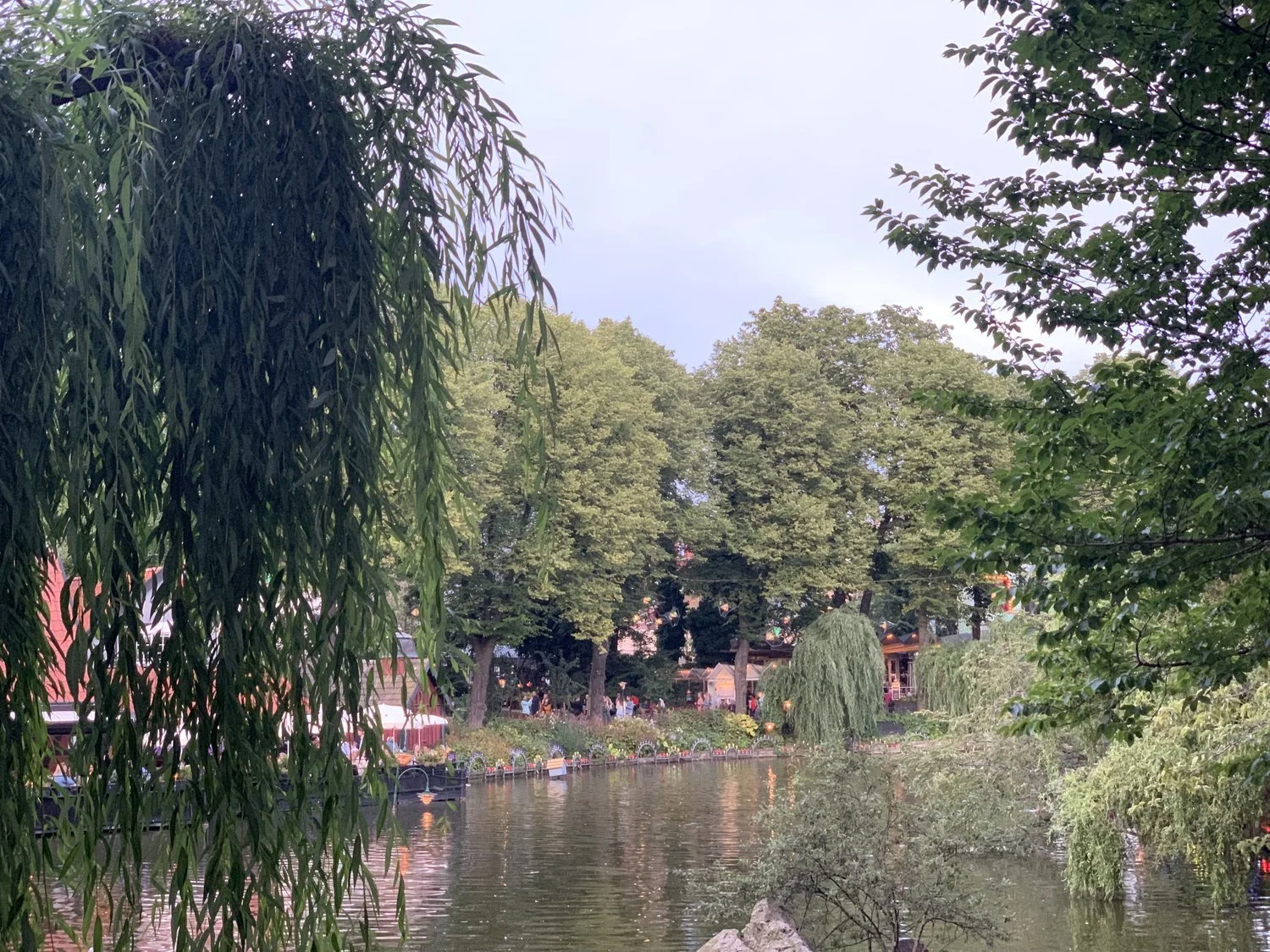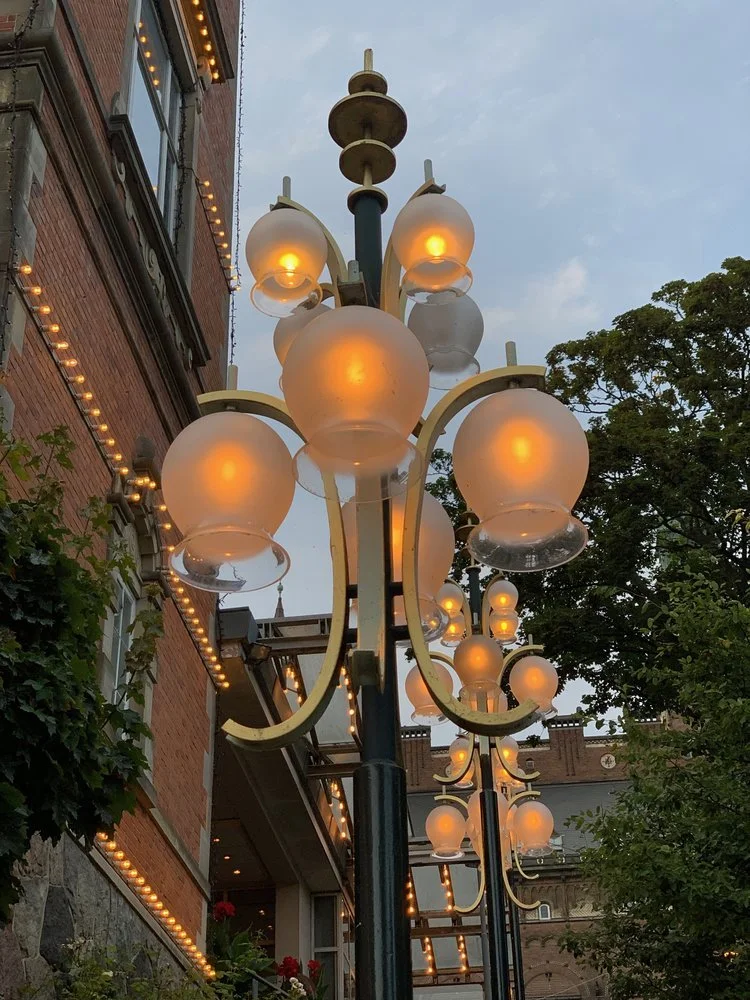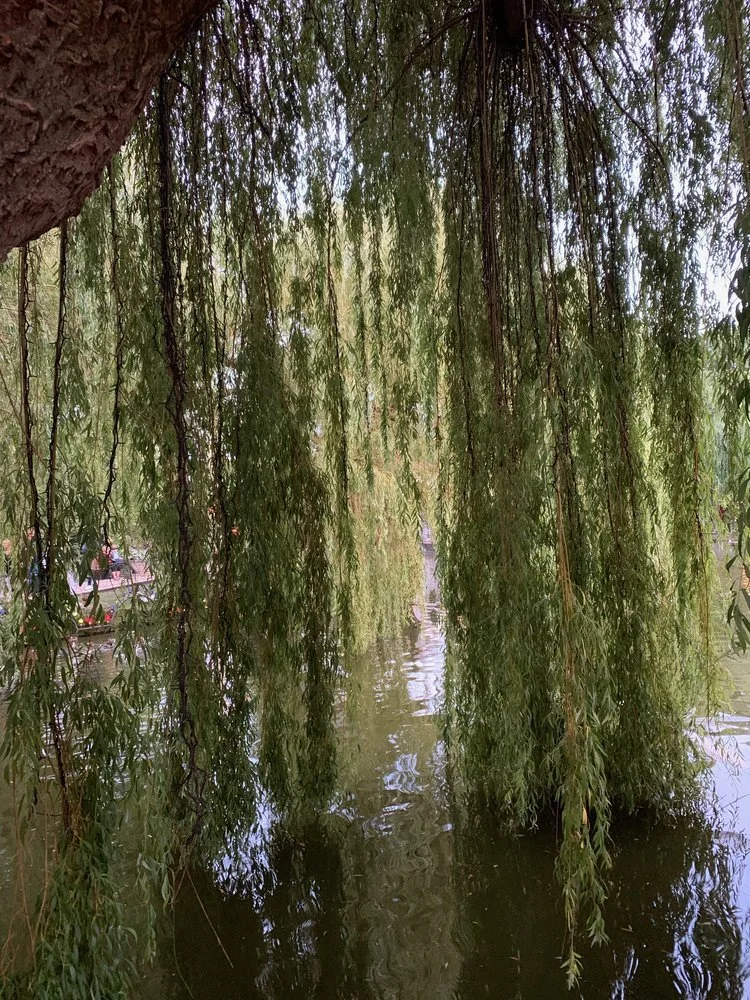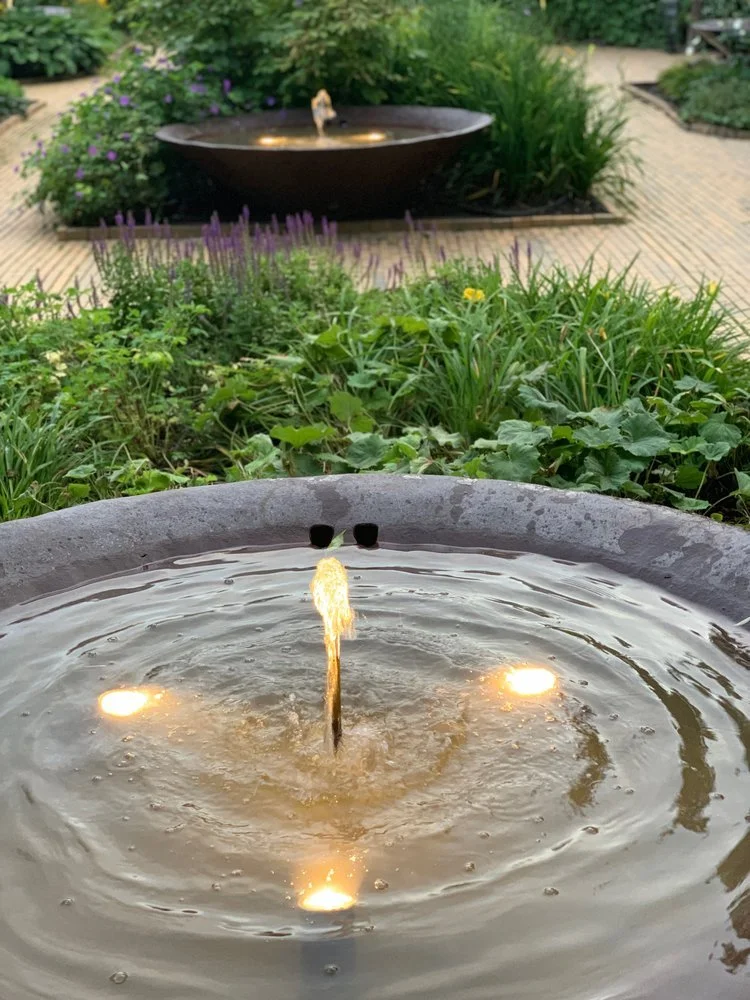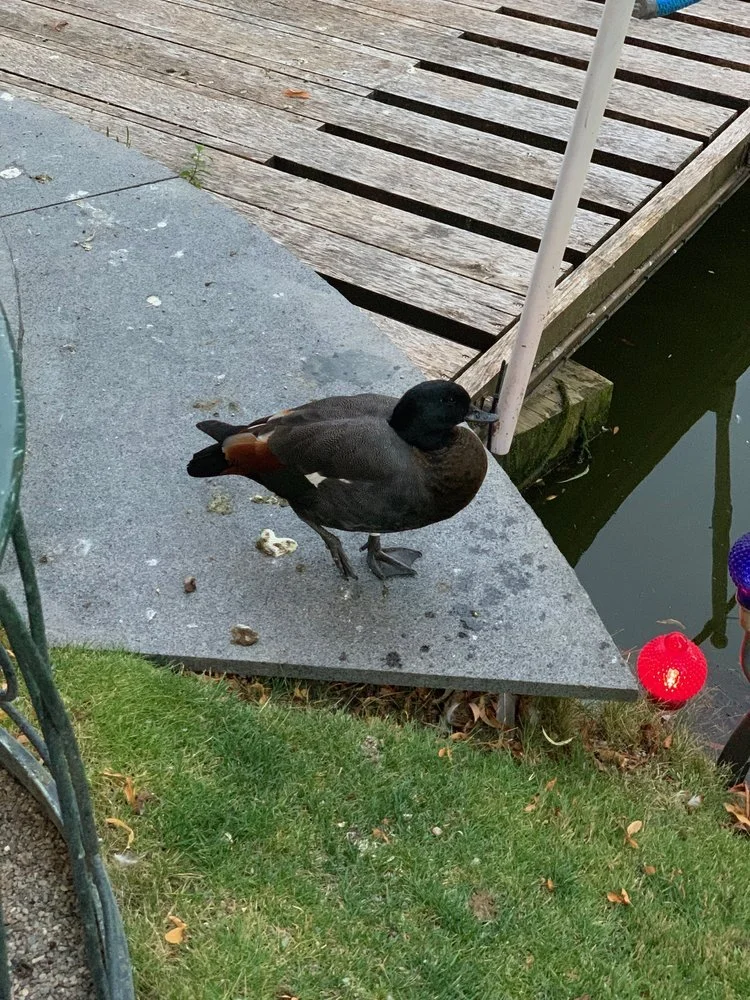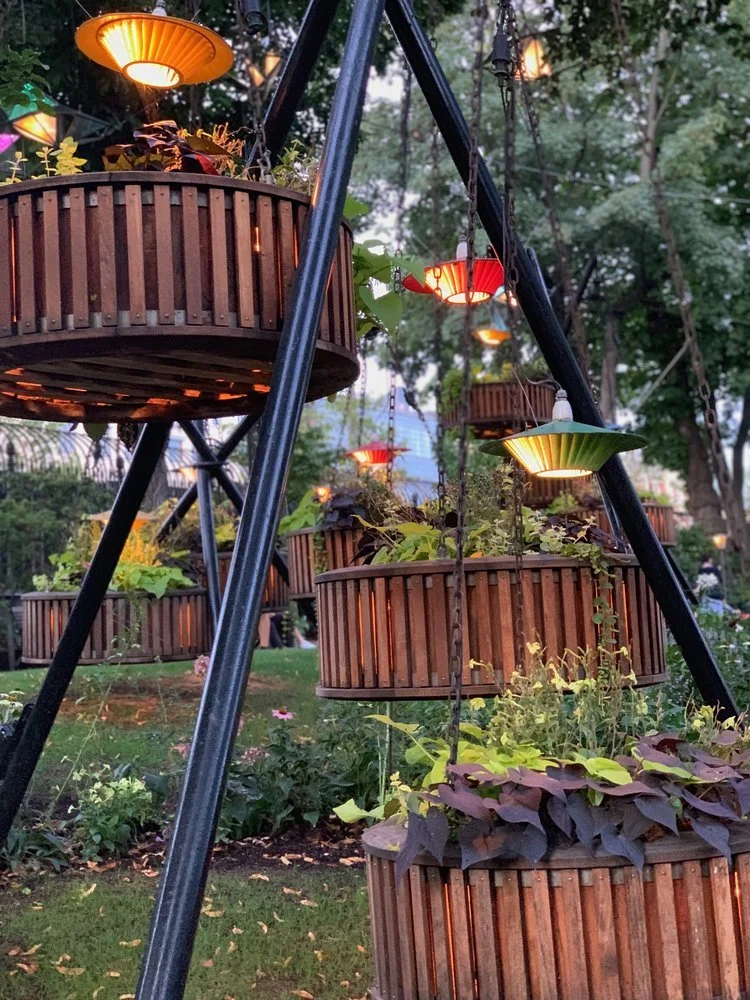Exploring Copenhagen, Denmark
Updated: April 7, 2024
Time needed in this city: 3-4 nights
When I told my Danish friend that I only had twenty-four hours in Copenhagen, her response was, “That’s not enough, but here’s a list of what you can see in that amount of time”. She was right. And also, her list was awesome.
My family and I flew into Copenhagen to embark on an 8-night Baltic cruise, complete with one whole day in this beautiful city and despite the jet lag, not being able to check into our hotel room yet (it was almost 11am local time), and it being far warmer out than we had anticipated, we had an amazing time exploring the city.
The below information is a complete guide of the best places to stay, the top rated places to dine and drink, and all there is to see and do. We’ve also included transportation tips, as well as a summary of the history of this beautiful city!
Jump To:
Where to Stay
Best Western Hotel Hebron
Before any judgment is passed, it was the nicest Best Western I’ve ever stayed at - the rooms were large, well-appointed, and very comfortable. And, their included breakfast was one of the best I’ve had with a reasonably-priced international hotel.
other places to stay
Manon Les Suites (Known for its incredible Bali-inspired indoor pool.)
Where to Dine & Drink
à terre
Serving sophisticated French cuisine with an award-winning wine list.
Alchemist
This two Michelin-starred restaurant provides an immersive and perfectly choreographed experience. It’s been said (by the Michelin guide) that eating there is a “highly theatrical affair at the pinnacle of destination dining”. The dinner is divided into acts and set across several locations, including a balcony, a play area, and a spectacular planetarium-like dome with images projected onto the ceiling. Dishes are technically complex and highly creative with dramatic contrasts. Chef-owner, Rasmus Munk, believes food is a great way to communicate with people, so accompanies his cooking with statements and ideas about the world.
NOTE: It is a 4-6 hour experience and is over $700pp without wine pairings.
Alouette
A one Michelin-starred and one green Michelin-starred restaurant offering tasting menus & wine pairings in a relaxed setting.
AOC
This two Michelin-starred restaurant serves creative dishes in 7 & 10-course menus, in the stylish arched basement of a 17th-century mansion.
Bistro Boheme
If you’re looking for an upscale French gastronomic experience, visit Bistro Boheme. Per Thøstesen, Owner and Head Chef, has precariously made sure that every minute of your time there is well worth the price tag. They serve French-influenced dishes like beef carpaccio & baked truffle soup.
For Emma
A gluten and lactose-free bakery.
Geranium
This three Michelin-starred restaurant is located on the 8th floor of the National Football Stadium, and boasts panoramic park views. The surprise, meat-free tasting menu comprises many beautifully presented dishes, each one as highly creative and impeccably precise as the last. First-rate ingredients and exceptional technique combine to create layers of flavor in every mouthful, and the poised, disarmingly hospitable service team are equally impressive.
Høst
Stylish dining room with white walls & rustic wooden tables, serving contemporary Nordic cuisine.
Kadeau
This two Michelin-starred and one green Michelin-starred restaurant offers a memorable, 16-18-course dining experience. The chefs are on display in the open kitchen and often serve and explain the New Nordic dishes themselves. The owner hails from Bornholm and he and his team are passionate about the island’s ingredients, which are dried, cured, preserved, smoked and pickled to maximum effect in complex, skillfully crafted dishes.
Koan
This two Michelin-starred, elegant restaurant provides a hugely engaging experience from start to finish, with its technically accomplished and completely original cooking. The heritage of Korean-born chef-owner, Kristian Baumann, influences the flavors and techniques across the 17-course tasting menu.
Kong Hans Kælder (King Hans Cellar)
In one of Copenhagen’s oldest buildings, this two Michelin-starred restaurant serves sophisticated French food in a gothic cellar.
Krebsegaarden
Art gallery's restaurant serving clever cooking driven by the current exhibition in arty surrounds.
Maple Casual Dining
Choice small plates & mains are served at this cool, bohemian eatery, which also has a tasting menu.
Marchal
This one Michelin-starred restaurant is named after Hotel D’Angleterre’s 1755 founder. This stylish restaurant boasts a floor-to-ceiling wine cellar and views out over the Royal Square. Precisely prepared dishes are modern in their presentation, but built on a classical French base. They also offer an extensive caviar collection.
Marv & Ben
Venue with an open kitchen & spartan decor for creative locallysourced food & an organic wine list.
Nimb Brasserie
Located in Tivoli Gardens, it serves sophisticated French fare.
NOMA
Now boasting three Michelin stars and one green Michelin star, this elegant yet relaxed waterside restaurant offers a unique experience, from the greenhouses at the entrance to the ingredients on the plate. The test kitchen is one of the most advanced in the world and offers a tasting menu of creative, complex dishes with vivid natural flavours. Professional, informal service puts guests at ease. Book well in advance.
Studio
The culinary experience at STUDIO is head chef Christoffer Sørensen’s interpretation of modern Nordic gastronomy. Always deeply rooted in taste and the best produce of the season – never dogmatic or closed off from inspiration from other parts of the world.
Tèrra
A green Michelin-starred restaurant serving a 14-course surprise menu using seasonal and local ingredients.
The Olive Kitchen and Bar
I cannot say enough great things about this place. The food is absolutely stellar (see the images above), the staff is incredibly patient and kind (they were dealing with 10 people), and even made sure to celebrate my birthday with a “sparkly” send-off. We recommend the risotto, pork, steak, salmon, and the raspberry pana cotta. If you’re a coffee drinker, they make incredible blended iced coffees.
Ved Stranden 10
Per their website, “A tranquil corner serving and selling wine to patrons and likeminded since 2009. Situated in front of Holmens canal in a historic tea shop, neighbour to our elephant Admiralgade 26.”
Things to See & Do
First, it should be noted that this city is unlike any city you’ve ever been to. History and old-world charm have been beautifully blended with new, modern architecture to create stunning landscapes and postcard-like pictures at every turn. It’s also incredibly clean, safe, and healthy. People ride bicycles virtually everywhere, bringing car use to a minimum.
Second, there’s an undercurrent of energy that comes alive at night. When work is done, especially if it’s a beautiful night, everyone is outside in the market squares and shopping districts, followed by a late dinner, then a bar or two, then to the clubs (mainly the young people) until the sun comes up (literally, the last club closes at 8am).
Day Trips
Historical Exploration
The Frederiksstaden district was built on the former grounds of two other palaces. The first palace was called “Sophie Amalienborg”. It was built by Queen Sophie Amalie, consort to Frederick III, on part of the land which her father-in-law, Christian IV, had acquired outside of Copenhagen's old walled city, now known as the “Indre By” district, in the early 17th century. Other parts of the land were used for Rosenborg Castle, Nyboder, and the new Eastern fortified wall around the old city.
The palace included a garden, which was a replacement for the "Queen's Garden", which had been located beyond the city's western gate, which had been destroyed under siege from Sweden in 1659. Work on the garden began in 1664, and the castle was built from 1669 to 1673. The King died in 1670, and the Queen Dowager lived there until her death on February 20, 1685.
Four years later, on April 15, 1689, Sophie Amalie's son, King Christian V, celebrated his 44th birthday at the palace with the presentation of a German opera, perhaps the first opera presentation in Denmark, in a specially-built temporary theatre. The presentation was a great success, and it was repeated a few days later on April 19. However, immediately after the start of the second performance a stage decoration caught fire, causing the theatre and the palace to burn to the ground. About 180 people died.
The King planned to rebuild the palace, whose church, Royal Household and garden buildings were still intact. In 1694, the King negotiated a deal with the Swedish building master, Nicodemus Tessin the Younger, who spent some time in Copenhagen that summer reviewing the property. His drawing and model were completed in 1697. The King, however, found the plans too ambitious and instead, began tearing down the existing buildings that same year, with the reclaimed building materials used to build a new Garrison Church.
The second Amalienborg was built by Frederick IV at the beginning of his reign. The second Amalienborg consisted of a summerhouse, a central pavilion with orangeries, and arcades on both side of the pavilion.
It has served as the Royal Family “winter” residence to this day.
TIP: The “hot” attraction is the complete changing of the guard ceremony at noon each day and is a do not miss!
Børsen
Børsen was planned by Christian IV as part of his plan to strengthen Copenhagen's role as a center for trade and commerce in Northern Europe. It was a site on the north side of the embankment, which connected Copenhagen to the new market town, Christianshavn. The king charged Lorenz van Steenwinckel with the design of the new building, but Steenwinckel died shortly thereafter. The assignment was then passed on to his brother, Hans van Steenwinckel.
Construction of the building began in 1620 and was largely completed in 1624, with the exception of the spire (installed in 1625) and details of the east gable (completed in 1640). The building contained 40 trading offices at the ground floor and one large room on the upper floor. The building was in use as a marketplace during the late 1620s.
In 1647, Christian IV sold the building to the merchant Jacob Madsen, for 50,000 Danish rigsdaler. Frederick III later reacquired the building from Madsen's widow. The building was restored by Nicolai Eigtved in 1745, with the interior of the building renovated again in 1855. In 1857, Frederick VII sold the building to Grosserer-Societetet for 70,000 rigsdaler.
The building housed the Danish stock-market until 1974. In 1918, unemployed anarchists attacked Børsen, an attack that went into the Danish history books as stormen på Børsen (Storm on the Stock Exchange).
CHRISTIANSBORG PALACE
Christiansborg Palace is a palace and government building on the islet of Slotsholmen, in central Copenhagen. It is the seat of the Danish Parliament, the Danish Prime Minister's Office, and the Supreme Court of Denmark. Also, several parts of the palace are used by the Danish monarch, including the Royal Reception Rooms, the Palace Chapel and the Royal Stables. It is the only building in the world that houses all three of a country's branches of government. The name “Christiansborg” is thus also frequently used as a metonym for the Danish political system, and is often referred to as Rigsborgen ('the castle of the realm') or simply Borgen ('the castle').
The present building, the third with this name, is the last in a series of successive castles and palaces constructed on the same site since the erection of the first castle in 1167. Since the early 15th century, the various buildings have served as the base of the central administration, until 1794, as the principal residence of the Danish kings and after 1849, as the seat of parliament.
The palace today bears witness to three eras of Danish architecture, as the result of two serious fires. The first fire occurred in 1794 and the second in 1884. The main part of the current palace, finished in 1928, is in the historicist Neo-baroque style. The chapel dates back to 1826 and is in a neoclassical style. The showgrounds were built, from 1738 to 1746, in a baroque style.
Christiansborg Palace is owned by the Danish Government, and is run by the Palaces and Properties Agency. Several parts of the palace are open to the public.
One of the most fascinating things about this palace are the 800 year-old ruins below its grounds, telling a storied history of previous castles that stood on this land, how architecture of previous fortresses improved over time, and even what early life was like within its former walls.
We saw clay stoves next to wells for easier maneuvering in medieval kitchens, secret toilets that included rudimentary plumbing (picture above left), fortress walls that show the history of how fortification improved over time, as well as how tree trunks served as conduits for piping that helped to transport water, waste, and other things that needed to help connect rooms within the palace.
It is worth taking the self-guided tour (there are plenty of signs that give the history of what you are looking at).
The Garden of the Royal Library was something we stumbled upon in our quest to find the entrance to the ruins, and it’s a place we wish we could have spent more time in.
The most fascinating thing about these gardens is how they were built. In 1920, landscape gardener, Jens Peder Andersen, and castle architect, Thorvald Jørgensen, designed and built them on top of Christian IV's old naval port, Tøjhushavnen, using old ship moorings within the pond as a reminder of what was once there.
Elephant Gate
When touring the Carlsberg brewery, don’t forget a visit to Elephant Gate!
Due to the swastikas on them, they have become a much-debated piece of history. But, the symbol signified something else entirely when the gate was first built. Completed in 1901, the Elephant Gate was part of a building complex for the Ny (New) Carlsberg Brewhouse, started by Carl Jacobson, to compete directly with his father who owned the original Carlsberg Brewery.
When first launching this new venture in 1882, Carl felt the need to adopt a symbol that would bring good luck and prosperity and chose the swastika, which since ancient times, had been associated with good fortune (in fact, the word “swastika” comes from a Sanskrit word meaning “lucky or auspicious object”). Used in the official trademark for Ny Carlsberg, the swastika suddenly became quite inauspicious in the 1930s, and its use by the brewery was forever discontinued in 1940.
The elephant statues, however, remain and include other symbolism beyond them. Each elephant bears the initials of one of Carl’s four remaining children (four other children had died by the time the gate was built); thus, the swastikas were meant not only to bring good fortune to the brewery, but also health and prosperity to each surviving child.
Moreover, Carl saw elephants themselves as symbols of stability, vigor, and loyalty. He sponsored the elephants at the Copenhagen Zoo, the brewery stables occasionally housed elephants, and Carlsberg eventually launched a strong, rich, “Elephant Beer” in 1959.
The Elephant Gate is the most famous Carlsberg landmark and once served as one of two portals to the Ny Carlsberg complex. The tower above the gate once served as a water tower and herb silo, but now it stands vacant, as does the rest of the old facility as on-site beer production stopped entirely in 2008.
Jens Olsen’s World Clock
Jens Olsen's World Clock (Verdensur) is an advanced astronomical clock, which is displayed in Copenhagen City Hall.
The clock was designed and calculated by Jens Olsen (1872–1945), who was a skilled locksmith and later, learned the trade of clockmaking. He also took part in the beginning of the clock's construction, though died 10 years before the clock was completed.
The clock consists of 12 movements, which together, have 15,448 parts. The clock is mechanical and must be wound once a week. Displays include lunar and solar eclipses, positions of the stellar bodies, and a perpetual calendar, in addition to the time. The fastest gear completes a revolution every ten seconds and the slowest every 25,753 years.
The calculations for the clock were made up until 1928, after which they were supervised by the astronomer, Elis Strömgren. The drawings for the clock were made between 1934 and 1936, and the actual production of the clock took place from 1943 until 1955. The clock was started on December 15, 1955 by King Frederik IX and Jens Olsen's youngest grandchild, Birgit.
Rosenborg castle
Rosenborg Castle was originally built as a country summerhouse in 1606 and is an example of Christian IV's many architectural projects. It was built in the Dutch Renaissance style, typical of Danish buildings during this period, and has been expanded several times, finally evolving into its present condition by the year 1624.
Throne of Denmark
Constructed in the late 1600s, the physical seat of the monarchy of Denmark’s power is a grand white throne, originally constructed as a large wooden chair with arches and an intricate canopy, with the extravagant flourish being the spiraling legs and spokes which were said to be made of actual unicorn horn (they are actually narwhal tusks). Later kings would add gilded figures who perch on the arm and backrest of the throne, adding an extra level of luxury to the seat, but much of its notoriety still stems from the seemingly magical building material.
The throne was inspired by the biblical Throne of Solomon, which was fabled to be guarded by 12 lions. In this case, the real throne is always accompanied by three massive silver lions. The life-size sculptures are arrayed around the throne in resting positions and feature solid gold eyes, manes, and rumps.
The Throne of Denmark was mainly used for coronation ceremonies before they were largely omitted from the country’s royal practices, and now, the magical seat is on display for all to see.
Religious History
Church of our saviour
When Christian IV planned Christianshavn in 1617, it was intended as an independent merchant's town on the island of Amager and it therefore, needed a church. A temporary church was inaugurated in 1639, but construction of the present Church of Our Saviour did not start until 1682. The church was inaugurated 14 years later, in 1695, but important interior features, such as the altar, had a notoriously temporary character and the tower still had no spire. The church got its permanent altar in 1732, but plans for construction of the spire were not revitalized until 1747 under the reign of Frederik V.
The new architect on the project was Lauritz de Thurah. He soon abandoned van Haven's original design in favor of his own project that was approved by the King in 1749. Three years later, the spire was finished and the King climbed the tower at a ceremony on August 28, 1752.
FREDERIK’S CHURCH (THE MARBLE CHURCH)
The church was designed by the architect, Nicolai Eigtved, in 1740, and was, along with the rest of Frederiksstaden, a district of Copenhagen, intended to commemorate the 300 years jubilee of the first coronation of a member of the House of Oldenburg.
The foundation stone was set by king Frederick V on October 31, 1749, but the construction was slowed by budget cuts and the death of Eigtved in 1754. In 1770, the original plans for the church were abandoned by Johann Friedrich Struensee. It stood as a ruin for nearly 150 years.
In 1874, Andreas Frederik Krieger, Denmark's Finance Minister at the time, sold the ruins of the uncompleted church, as well as the church square, to Carl Frederik Tietgen for 100,000 Rigsdaler, none of which was to be paid in cash, on the condition that Tietgen would build a church in a style similar to the original plans, then donate it to the state when complete, while in turn, he acquired the rights to subdivide neighboring plots for development.
Tietgen got Ferdinand Meldahl to design the church in its final form and financed its construction. Due to financial restrictions, the original plans for the church to be built almost entirely from marble were discarded, and instead Meldahl opted for construction to be done with limestone. The church was finally opened to the public on August 19, 1894.
FUN FACT: Frederick's Church has the largest church dome in Scandinavia with a span of 31 m, which rests on 12 columns.
Grundtvig’s Church
The commission for the construction of a church, to be named after the Danish philosopher, pastor, and hymn writer, N. F. S. Grundtvig, was decided through a competition won by Peder Vilhelm Jensen-Klint, in 1913. The foundation of the new church was only laid after World War I, on September 8, 1921, Grundtvig's birthday. Building took place mainly from 1921 to 1926 when the tower section was completed, leading to the initial inauguration of the so-called Tower Church in 1927. Further work on the interior and on adjacent buildings continued until 1940 and was completed by Klint's son, Kaare Klint, after his father's death in 1930.
The Arts & Sciences
Agnete and the Merman
Since 1992, an underwater sculpture by the Danish artist, Suste Bonnén, has brought the story from fantasy into reality under a bridge in central Copenhagen.
The tale of Agnete and the Merman is a traditional Danish story that was originally passed down by oral tradition. As the story goes, a young woman named Agnete was passing by the sea when a remarkably forward and decisive merman emerged from the waters and offered her his hand in marriage. Being a spritely and impulsive girl herself, she dropped what she was doing and went to live with him beneath the waves. The couple had seven little mer-kids and things seemed to be going great until Agnete heard distant church bells ringing from land. She left her mer-family to pay a visit to her old life, promising to return. However, once she was reacquainted with her old life, Agnete decided not to return to the sea, leaving her merman to be a single dad, forever pining for his lost love.
The underwater sculpture, stting beneath the Højbro Bridge, at the bottom of the Frederiksholm canal, depicts Agnete’s husband and her abandoned children reaching up towards the surface, longing for their mother in a haunting scene captured in eternal bronze.
DESIGNMUSEUM
I’ve always loved a good modern art museum, and DesignMuseum in Copenhagen is one that I couldn’t miss.
The Danes have always had a unique eye for form over function, designing everything from furniture to fashion in a manner that celebrates the current decade with a nod towards the future.
Beyond what’s inside the museum, if you have time, grab a salad and a glass of wine from the cafe, and enjoy the expansive courtyard within the museum’s inner square.
National Museum of Denmark
The museum covers 14,000 years of Danish history, from the reindeer-hunters of the Ice Age, Vikings, and works of religious art from the Middle Ages, when the church was highly significant in Danish life. Danish coins, from Viking times to the present, and coins from ancient Rome and Greece, as well as examples of the coinage and currencies of other cultures, are also on display. Exhibits on the Danish people, from 1560 to 2000, are also on display.
Ny Carlsberg Glyptotek museum
The Ny Carlsberg Glyptotek, commonly known simply as, “Glyptoteket”, is an art museum in Copenhagen. The collection represents the private art collection of Carl Jacobsen, the son of the founder of the Carlsberg Breweries.
Primarily a sculpture museum, the focal point is an antique sculpture from the ancient cultures around the Mediterranean, including Egypt, Rome and Greece, as well as more modern sculptures, such as a collection of Auguste Rodin's works. However, the museum is equally noted for its collection of paintings that includes an extensive collection of French impressionists and Post-impressionists, as well as Danish Golden Age paintings.
The French Collection includes works by painters such as Jacques-Louis David, Monet, Pissarro, Renoir, Degas and Cézanne, as well as those by Post-impressionists, such as van Gogh, Toulouse-Lautrec, and Bonnard. The museum's collection includes all the bronze sculptures of Degas, including the series of dancers. Numerous works by Norwegian-Danish sculptor Stephan Sinding are featured prominently in various sections of the museum.
'Trold, der vejrer kristenblod’
In 1896, sculptor Niels Hansen Jacobsen created the bronze statue Trold, der vejrer kristenblod (‘Troll, which Sniffs Out Christian Blood’). Installed in 1902, in front of the Church of Jesus in Copenhagen’s Valby district, the effigy portrays a malevolent troll with outstretched claws, seemingly reaching toward the church’s sizable crucifix. Symbolizing darkness, hatred, and death, the sculpture reflects somber facets of the human condition.
The statue’s name originates from Norse mythology, in which a brave and cunning protagonist evades a foolish troll. As the half-blind but scent-savvy troll approaches the hero, it famously declares: “I smell the blood of a Christian man!”
Commissioned by Carl Jacobsen of Carlsberg Brewery, at the beginning of the 20th century, who also financed the nearby church, the unsettling figure was intended to serve as a reminder of the world’s evil and encourage people towards Christianity. However, parishioners found its placement outside the sacred building blasphemous and demanded its removal. In the 1920s, during land subdivision in the area, the bronze troll was eventually relocated to the Ny Carlsberg Glyptotek art museum’s garden, where it remains today.
In 2002, a replica of the folkloric figure was reinstated at its original location in front of the church in response to local requests and to commemorate the Ny Carlsberg Foundation’s centennial. This second installation, now positioned behind a low hedge, serving as a barrier between the figure and the house of worship, encountered less opposition than a century earlier.
The Little Mermaid Statue
Installed in 1913, The Little Mermaid sits atop its water-locked rock as the symbol of the city of Copenhagen. But, it hasn’t always sat there peacefully.
Inspired by a ballet performance of the classic folktale, the piece was originally commissioned by the son of a local beer magnate. As the piece became a popular tourist attraction, it soon became an unofficial mascot for the entire city. With this attention, came a number of protests and random acts of vandalism to befall the statue.
The mermaid’s head was first stolen in 1964 by political dissidents, and was never recovered. A new head was grafted onto the body, but then the statue’s arm was taken off in 1984. The arm was later recovered, but then another decapitation attempt in 1990 left a wide gash in the figure’s neck. In 1998, the head was once again stolen— but this time, recovered; and finally, in 2003, the entire statue was blown off its rock with explosives.
Today, the statue has been restored and still draws countless admirers each year.
'Tisseren' ('The Pee-er')
Claus Carstensen’s 2005 bronze sculpture, Tisseren (“The Pee-er”), is positioned by a red brick wall outside Copenhagen’s academic Panum Building. Approaching the urinating male figure reveals meticulous details, reminiscent of a street-performing human statue.
Beyond its visual impact, Carstensen’s sculpture delves into the theme of “territories.” The figure, a self-replica of the artist, captures a unique aspect of human experience—marking territory. This bronze imprint can be seen as a commentary on power, self-expression, and human instincts, challenging traditional expectations of outdoor art.
The Panum Institute garnered praise from prominent art personalities in Denmark for its decision to install Claus Carstensen’s provocative sculpture. They considered it both bold and modest, especially noteworthy as it involved approving a figure that appears to relieve himself on the academic institution’s own building.
Tisseren belongs to a group of three sculptures by Carstensen. The other two, situated a few feet away, similarly portray the artist. One is shown standing on a chair, assertively pointing towards the world as if asserting ownership (‘The Pointer’). The other is seated in contemplation, hands over its head, immersed in an internal struggle (‘The Crouched One’).
Unique Experiences
CopenHill
CopenHill (known to locals as Amager Bakke) is the world’s first combination re-usable energy power plant and fully functioning ski slope. Its boxy silver exterior, lean gray smoke-billowing towers, and blinking red lights are viewable throughout Copenhagen. At the top of the 85-meter climb, to the hill’s roof, visitors will find a fully-operational dry slope for skiers and an observation look out with breathtaking views of the city.
A ski lift and elevators are available, along with walking paths, along the edge of the building. If that isn’t enough, the world’s highest climbing wall has been constructed along the building’s tallest outside edges (it’s 85 meters tall by 10 meters wide and comes directly off the side of the building), though it requires a certificate to climb.
The building, itself, cost over $650 million to construct, was designed as a grand gesture towards reaching Denmark’s goal of becoming the world’s first carbon-neutral city by 2025. The plant boasts the potential to generate enough clean energy to deliver electricity to 150,000 homes per year by incinerating 440,000 tons of waste.
Culture Tower on Knippels Bridge
If you walk across the Christianshavn side of the Knippelsbro bridge, this bright teal, yet unassuming river tower-turned-cafe sits at the side of the harbor. Most people find this gem by accident while walking across the bridge; many Danes don’t even know of its existence.
The river tower, itself, has been around for 80 years, but the cafe found its home here just a few years ago. The tower operates as a place for the community to come together for cultural events and good food. Once you spot the tower with the big white flag, run over and grab a coffee while taking in the sights and sounds of Copenhagen.
Walk up the lit staircase and you’ll come across two dining rooms before reaching the outdoor tables and chairs. Sitting on the deck is peaceful and the atmosphere inside is cozy and fun.
Hans Christian Andersen's Grave
Hans Christian Andersen was born in Odense, Denmark and was the son of a shoemaker and a washerwoman. At the age of 14, he moved to Copenhagen, where he’d call it “home” for most of his life. Though Andersen loved to travel (the large leather trunk he carried on those journeys is on display at the Copenhagen airport), he never settled anywhere else.
Andersen died in 1875, at the age of 70. The composer, J.P.E. Hartmann, was a close friend and one of the last people to visit the author before his death. Andersen’s health had been growing worse for several years, and the two reportedly discussed what music would be played at his funeral.
On August 11, 1875, Andersen’s funeral was held at the Cathedral of Our Lady in Copenhagen. He was buried in Assistens Cemetery, where he originally shared a burial plot with his friend, Edvard Collin, and Collin’s wife, Henriette. In 1914, the Collins’ tombstone was moved to another cemetery. A new gravestone was put in place, but only included Andersen’s name and the dates of his birth and death.
Leif Sonne's Bottled Beer Collection
Leif Sonne, an engineer from the small town of Svendborg, began collecting bottles of unopened beer as a simple hobby in 1968. Beginning with easily obtainable European varieties, he eventually expanded to include beers from all over the world. By 1990, the collection had grown to over 10,000 unique bottles and had outgrown Sonne’s house.
The collection was moved to the Carlsberg Brewery, in Copenhagen, in 1993, where it continued to expand under Mr. Sonne’s guidance. By 2007, the collection had grown to more than 22,000 different bottles and was certified by Guinness World Records to be the largest collection of bottled beer in the world.
Vejrpigerne ('The Weather Girls')
In Copenhagen, a duo of young women began predicting the weather for the capital in the 1930s.
Known as Vejrpigerne, or “the Weather Girls”, the statues are located at the top of the Richshuset building, right across from city hall and above an enormous neon thermometer. They are located on a large spinning disk that can move one of them in or out of the tower, not unlike a glockenspiel. One of the girls is walking her dog while holding an umbrella - she comes out when it is predicted to be rainy. The other girl is riding a bicycle, ready to go explore the city when the weather is fair.
The pair were made in 1936 by Danish sculptor, Einar Utzon-Frank, and have been a beloved landmark of the city for decades. When functioning properly, an internal barometer would determine which of the figures would rotate to the front. Though the thermometer on the outside of the Richshuset still works, the mechanism that powered the rotation broke in the 1990s and has yet to be repaired. Currently, both of the weather girls can be seen from their perch over the Rådhuspladsen.
Walking Tours
freetown Christiania
On September 26, 1971, Christiania was declared open by Jacob Ludvigsen, a well-known provo and journalist who published a magazine called Hovedbladet ('The main paper'), which was intended for and successfully distributed to mostly young people. In the paper, Ludvigsen wrote an article in which he and five others explored what he termed 'The Forbidden City of the Military'. The article widely announced the proclamation of the free town.
Although Christiania enjoyed an initial blind eye from the authorities, The Ministry of Defence brought a legal case against Christiania on April 1, 1976, which was upheld by the Supreme Court on February 2, 1978, who ruled that Christiania should be cleared immediately. However, despite the ruling, immediate action was not taken and that same year, the Danish Parliament decided that a development plan should be drafted first.
In addition to these external problems, pressure was building internally as well, following the death of 10 residents in the space of one year from overdoses. In 1979, the residents of Christiania began the "Junk Blockade". For 40 days and nights, residents patrolled the buildings where hard drugs were sold and sought to push the dealers out of the community while offering aid to the addicts. This is still an ongoing problem today.
During the 1980s, motorcycle gangs fought their way into Christiania, seeking to gain control over the drug market. As a result, biker jackets were banned from Freetown. Despite that, the town was legalized in 1989.
In the 1990s, through to today, the town has had violent clashes with authorities, attacks with weapons, and gang-related violence ending in deaths. While the inhabitants of Freetown protest the drug trade, it continues to grow.
TIP: If you feel the urge to go there, do not wear anything of value and do not take any pictures. They do not like tourists in this area. If you want a safer option, book: Private Hippies & Christianshavn by Politically Incorrect Tours.
KONGENS NYTORV (The New King’s Square)
The largest square of the city, Kongens Nytorv was laid out by Christian V in 1670, in connection with a major extension of the fortified city, and has an equestrian statue of him at its center. The initiative moved the center of the city from the medieval area around Gammeltorv (at that time, a muddy medieval marketplace), to a cobbled new square with a garden complex, inspired by the Royal city planning seen in Paris from the early 17th century.
Important buildings, facing the square, include the Royal Danish Theater (1874), the Charlottenborg Palace (1671) (now the Royal Danish Academy of Fine Arts), the Thott Palace (1683) (now the French Embassy), the Hotel D'Angleterre, and the Magasin du Nord department store.
If you have time to enjoy an afternoon there, go shopping at some of the Danish stores within Magasin Du Nord and take lunch on the patio of Hotel D’Angleterre.
Originally built as a residence for Ulrik Frederik Gyldenløve, Charlottenborg Palace (from 1672 - 1677), he lived there until 1700 when he sold it to Queen Charlotte Amalie, who allowed the Academy of Arts to use parts of the palace. She lived there until her death in 1714, which then, it was passed onto King Christian VI. After some renovations between 1736 and 1737, the palace served different uses, until 1754 when the Royal Danish Academy of Fine Arts took over. Today, it also houses Kunsthal Charlottenborg, an institution for contemporary art, and Danmarks Kunstbibliotek, the Royal Art Library.
The young French hairdresser and makeup artist, Jean Marchal, came to Copenhagen in the middle of the 1700s, as part of a theatre troupe. He was hired as a valet to Count Conrad Danneskiold Laurvig and settled in Copenhagen. Then he met the Royal Chef’s daughter, Maria Coppy, and fell head over heels in love. The pair complimented each other perfectly – she was a genius at cooking while he knew everything there was to know about working for the aristocracy. This match-made-in-Copenhagen was the beginning of the d’Angleterre’s history.
In 1755, Mr. and Mrs. Marchal settled down by the lakes of Copenhagen and opened a restaurant “The Strong Man’s Garden.” They then moved their restaurant to Kongens Nytorv (King’s New Square) at the corner of Vingårdstræde, in the heart of Copenhagen, and added rooms for guests. It’s from this year that we mark the official founding of the d’Angleterre.
Maria Marchal died young with Jean dying a few years later. His widow went on to run the property for another 11 years before selling it in 1787 to restauranteur, Gottfried Rau. He renamed the building “Hotel d’Angleterre”, French for The England Hotel.
Sadly, in 1795, the hotel burned to the ground in the “Great Fire of Copenhagen”. Finding it too costly to rebuild, Rau converted the nearby Gramske Gård into the new Hotel d’Angleterre – where it stands to this day.
In 1872, the hotel was purchased by new owners who put it under extensive renovations for three years. During that time, they added a large ballroom (Louis XVI Ballroom).
In 1902, the newly built “palm court” was the place to be seen. Thirteen years later, and a large fire broke out, burning the wings of the building, to the ground. To continue it’s “bad luck” both wars took their toll on the hotel, with renovations starting in 1945 - it took them 10 years to complete. Since 1955, it changed owners a few times but for the better. Much opulence was added to the hotel until it was sold to the present owners, in 2010. In 2011, it underwent its most extensive renovation in history, having been completely gutted and rebuilt. It reopened in 2013.
Back in 1868, Theodor Wessel and Emil Vett opened a draper's shop in Aarhus under the name, “Emil Vett & Co.”, which was an immediate success. In 1871, they moved to Immervad where the Aarhus store is still located. However, in 1870, their company opened a shop in Copenhagen, in rented space, in the fashionable Hotel du Nord on Kongens Nytorv, where Hans Christian Andersen had boarded from 1838 until 1847. The shop occupied an ever-larger part of the hotel, and the company adopted the name “Magasin du Nord” after it, in 1879. By 1889, Magasin du Nord had taken over the entire hotel, though it was demolished in 1893, together with a neighboring building. The current department store building was completed in 1894, in a French Renaissance Revival style.
The Royal Danish Theatre is both the national Danish performing arts institution and a name used to refer to its old purpose-built venue, from 1874, located on Kongens Nytorv in Copenhagen. The theatre was founded in 1748, first serving as the theatre of the king, and then as the theatre of the country. The theatre presents opera, the Royal Danish Ballet, multi-genre concerts, and drama in several locations. The Royal Danish Theatre organization is under the control of the Danish Ministry of Culture.
The Thott Mansion is a listed town mansion, located on Kongens Nytorv, in Copenhagen. It was built for the naval officer, Niels Juel, in the 1680s, but his Baroque mansion was later adapted to the Neoclassical style by the French architect, Nicolas-Henri Jardin, in 1763. The building takes its current name after the Thott family who owned it from 1750 to 1930. It now houses the French embassy.
Rundetårn
The “Round Tower” is a 17th-century tower in Copenhagen- one of the many architectural projects of Christian IV of Denmark. Built as an astronomical observatory, it is noted for its equestrian staircase, a 7.5-turn helical corridor leading to the platform at the top, and its views over Copenhagen.
The tower is part of the Trinitatis Complex, which also includes a chapel, the Trinitatis Church, and an academic library, which were the first facilities of the Copenhagen University Library, founded in 1482.
Strøget
Strøget one of the longest pedestrian shopping streets in Europe. Located at the center of the old city of Copenhagen, it has long been one of the most high-profile streets in the city.
TIVOLI GARDENS
One of the most iconic places Copenhagen is known for is Tivoli Gardens.
Opened on August 15, 1843 by Georg Carstensen, Tivoli Gardens has been a wonder for all those who have passed through its gates, including Hans Christian Andersen, who was inspired to write the fairy tale, “Nightingale” because of the beauty of what he saw.
Over time, the gardens expanded to a full park, some of which has been maintained to preserve its original build (a few structures were sabotaged when the Germans invaded in the 1940s), including Alhambra (pictured below), the front gate (built in 1890), Michelin-rated Nimb (named for the Nimb family, opened in 1909), and the wooden roller coaster (1914).
But, one of the greatest notable facts was Walt Disney’s repeated visits to gather his inspiration for Disneyland, which if you’ve visited both parks, will see some of the same motifs throughout.
NOTE: The best time to visit Tivoli Gardens is in the evening when it comes to life.
Ticket prices vary depending on if you are walking the grounds or enjoying the rides. Entrance tickets are about $20 USD pp whereas unlimited rides + entrance are $57 - $65 USD pp depending on the day.
How to Get Around
Copenhagen is extremely walkable and very bike-friendly. In fact, biking is the most common way to get around town. There is also a well-planned subway system that can take you anywhere around Copenhagen and beyond.
Should you need one, especially to get to and from the airport, taxis and ride shares are also available.
A History Summary
4000 BCE - Signs of human activity have been recorded, but no settlements took place.
11th century - The first settlement was recorded.
Mid-12th century - The area grew importance after Bishop Absalon acquired possession.
13th century - The city was fortified with a stone wall.
1254 - It received its city charter under Bishop Jakob Erlandsen.
1350 - The plague, “Black Death” took place.
1416 - Eric of Pomerania took over control of the town. Thereafter, Copenhagen came under the rule of the Danish Crown.
1479 - The University of Copenhagen was founded.
1596 - The town was significantly enlarged under Christian IV of Denmark after his coronation.
1648 - By the time of Christian IV's death, Copenhagen had become Denmark's principal fortification and naval port, and the town formed a framework for the administration of the Danish kingdom and as a center of trade in Northern Europe.
1658 - 1659 - The city withstood a severe siege by the Swedes, under Charles X, and successfully repelled a major assault.
1700 - Copenhagen underwent a bombardment from a British-Dutch-Swedish navy but did not suffer much damage.
1711 - 1712 - The plague killed about a third of the population.
1728 and 1795 - The city was ravaged by large fires, which destroyed most of the medieval part of town.
1731 - 1732 - Christian VI tore the old Copenhagen Castle down in 1731–32 to replace it with Christiansborg Palace.
1801 - A British fleet, under Admiral Parker, fought the Battle of Copenhagen, with the Danish Navy, in Copenhagen harbour.
1807 - A British preemptive attack on Copenhagen, targeting the civilian population, in order to seize the Dano-Norwegian fleet happened. The British had 30,000 men, surrounding Copenhagen. The attack continued for the next three days and resulted in the death of at least 2,000 civilians and destruction of most of the city.
1849 - Denmark became a constitutional monarchy.
1850s - The ramparts of the city opened to allow new housing to be built around the lakes, which bordered the old defense system to the west.
1864 - The Second War of Schleswig in 1864 (where Denmark lost a third of its area) was the primary reason the old ramparts were replaced by the Fortification of Copenhagen.
1940 - 1945 - Copenhagen was occupied by German troops, along with the rest of the country, from April 9, 1940, until May 4, 1945. In August 1943, when the government's collaboration with the occupation forces collapsed, several ships were sunk in Copenhagen Harbour, by the Royal Danish Navy, to prevent them being used by the Germans,
May 1945 - Copenhagen was officially liberated by British troops.
1970s - The “five-finger-plan” provided commuter train links to the surrounding towns and suburbs.
1980s and 1990s - The city was on the verge of bankruptcy. Negative factors included, de-industrialization, flight to the suburbs, high unemployment, escalating welfare, dilapidated housing, and ethnic strong segregation.
1992 - 2002 - Construction on the Copenhagen Metro began and opened 10 years later.
Today - It’s a thriving, clean, and beautiful city.
